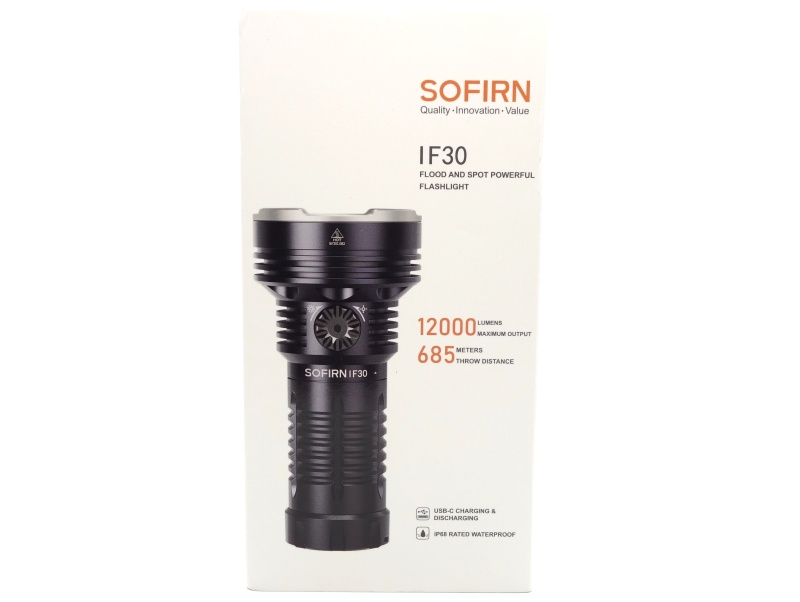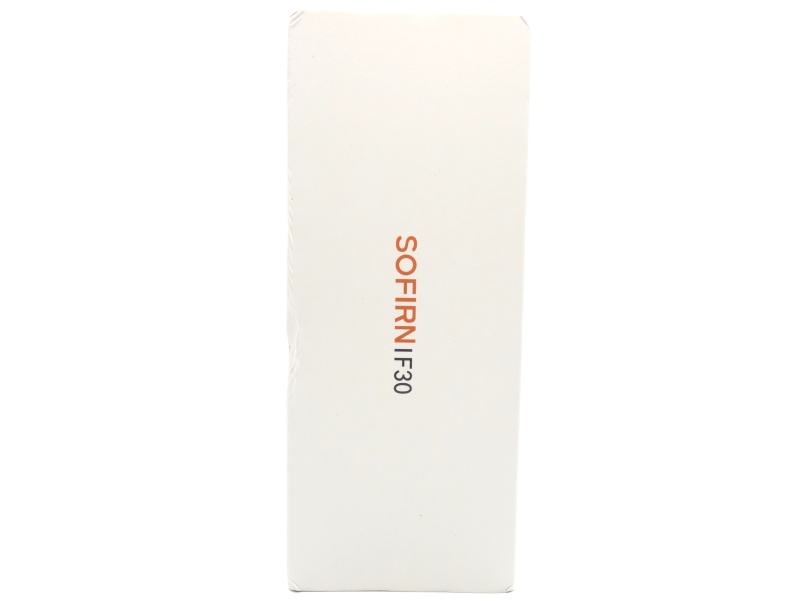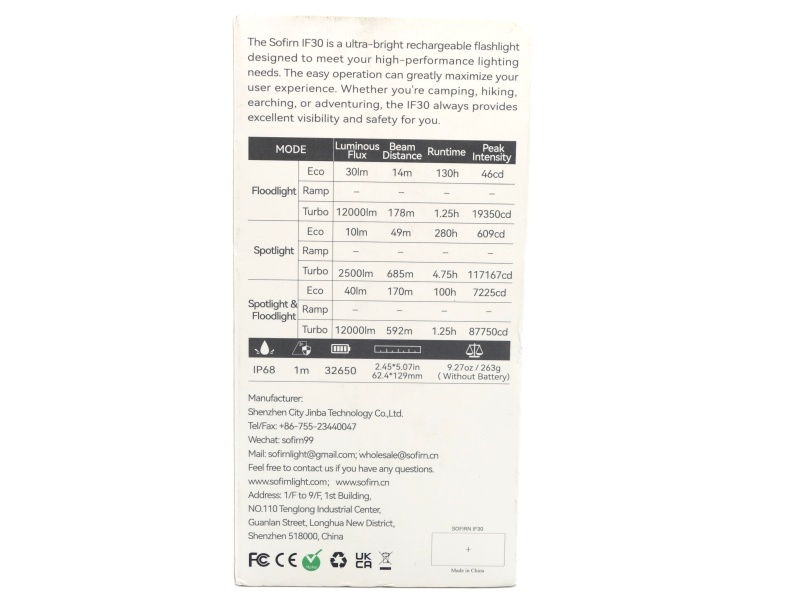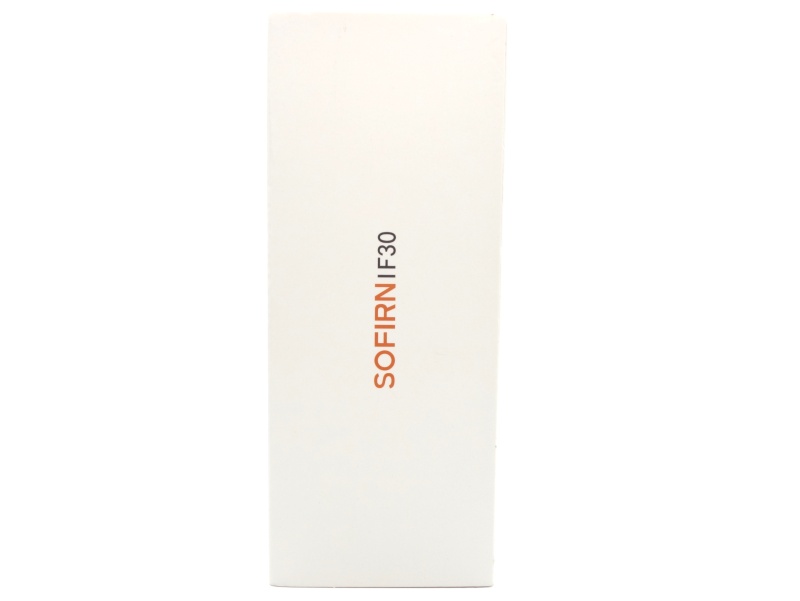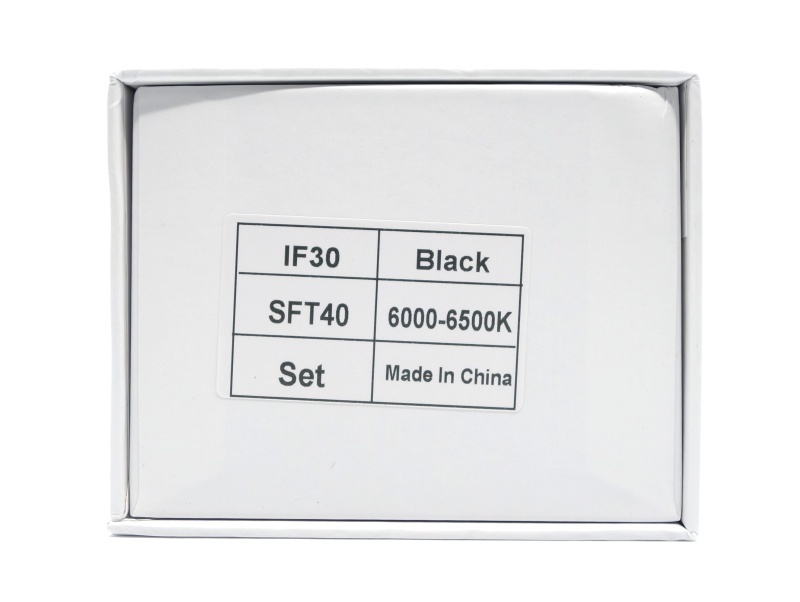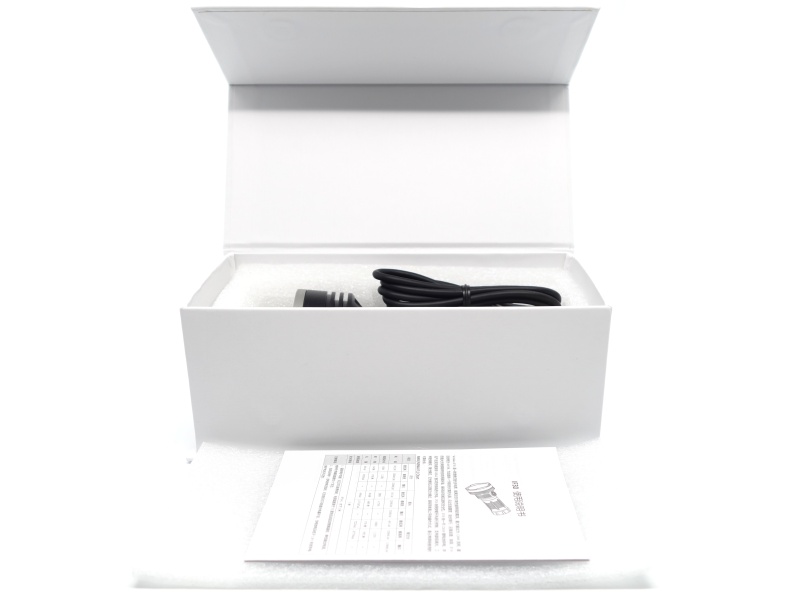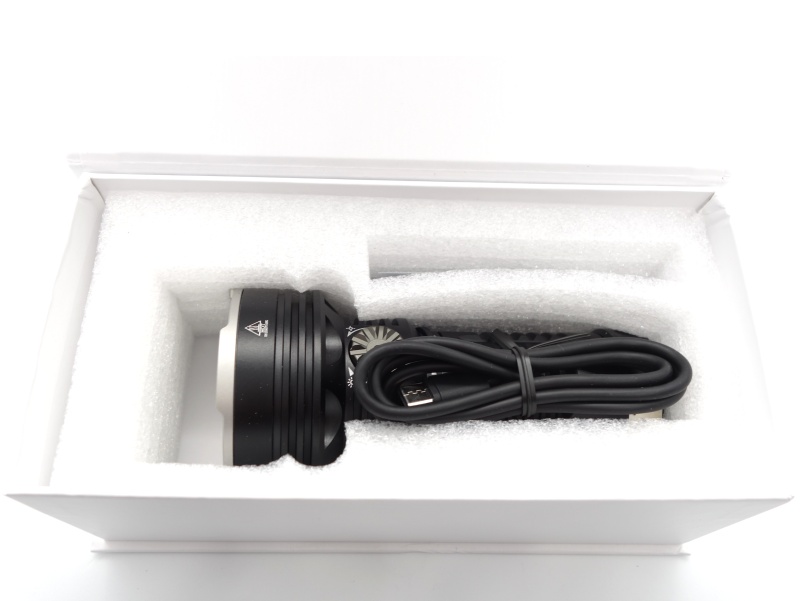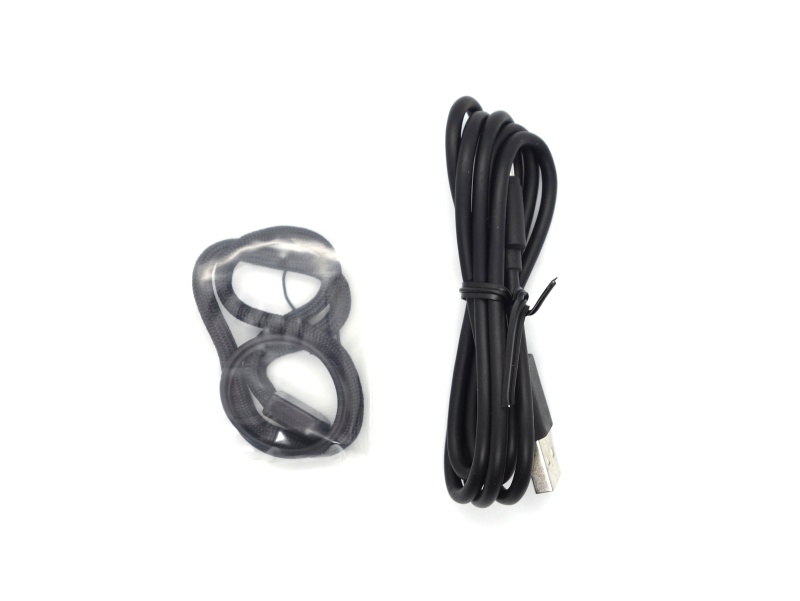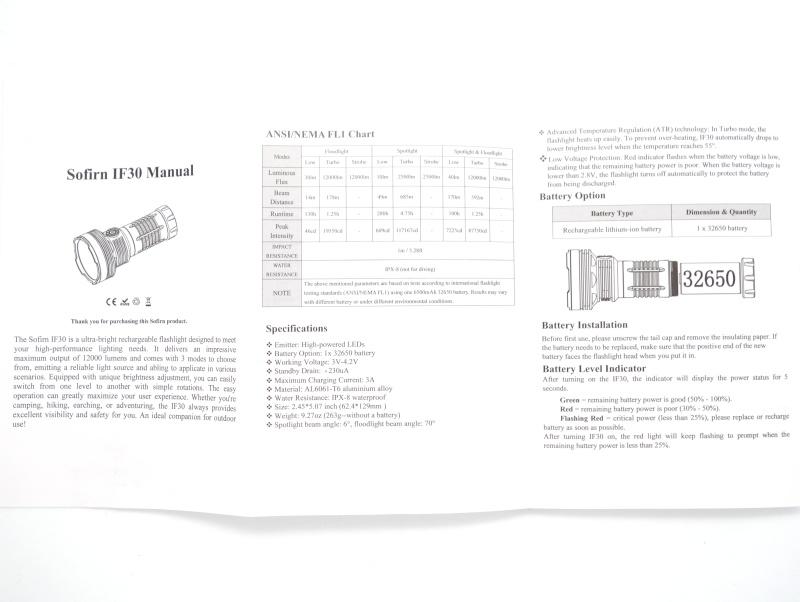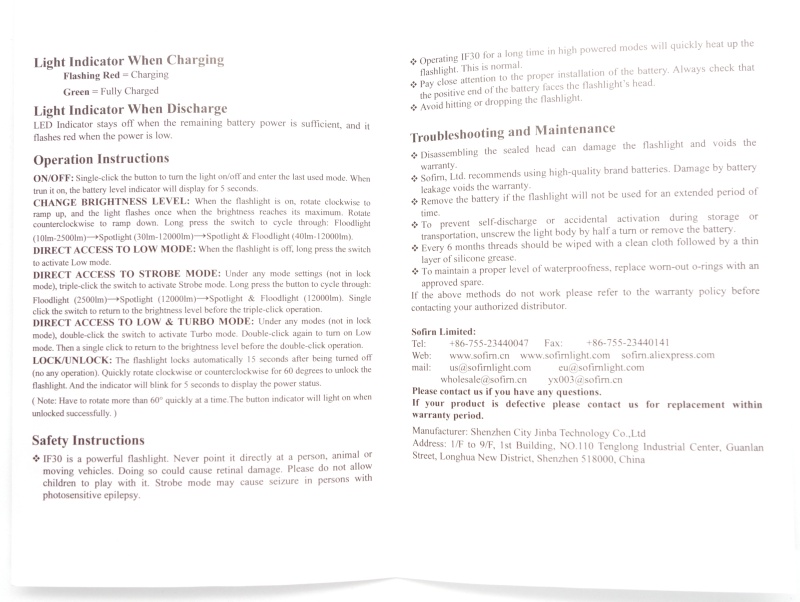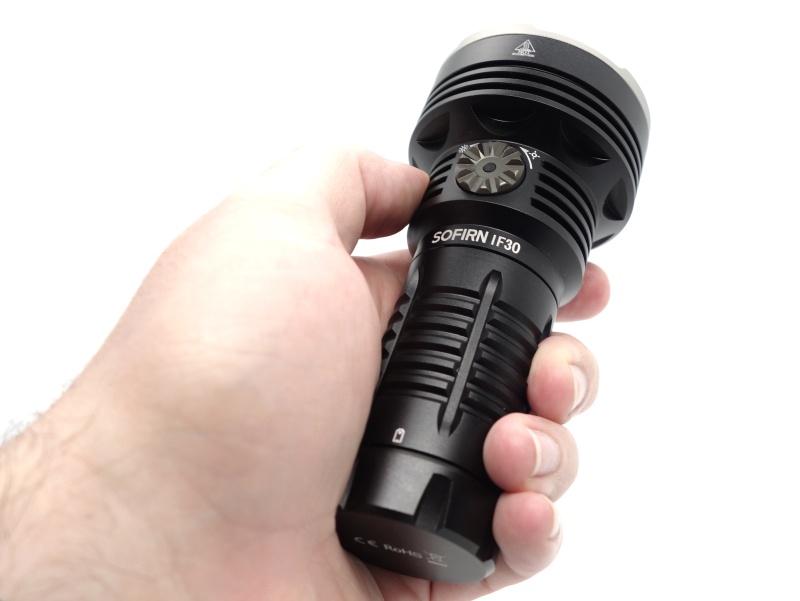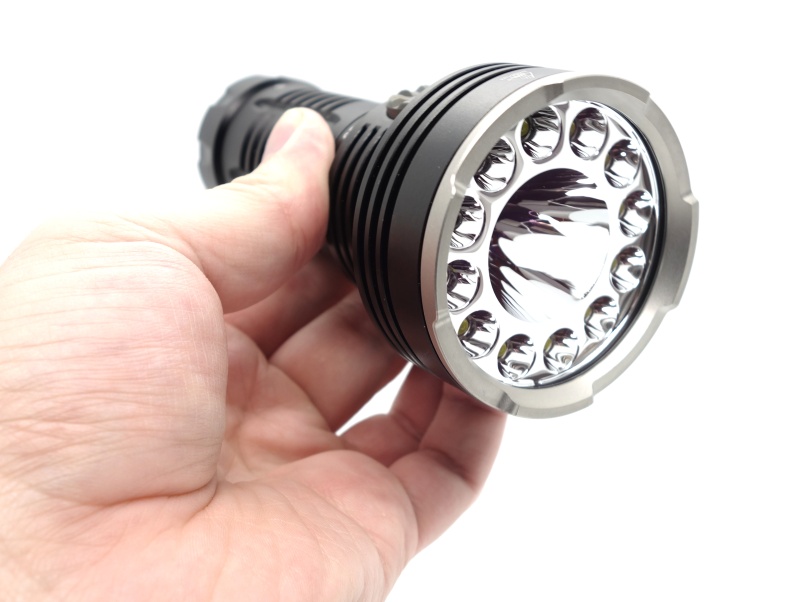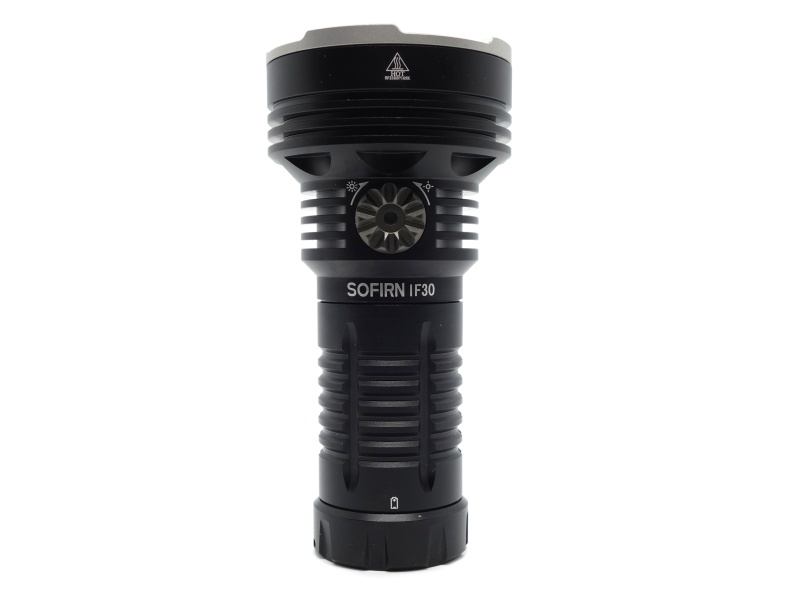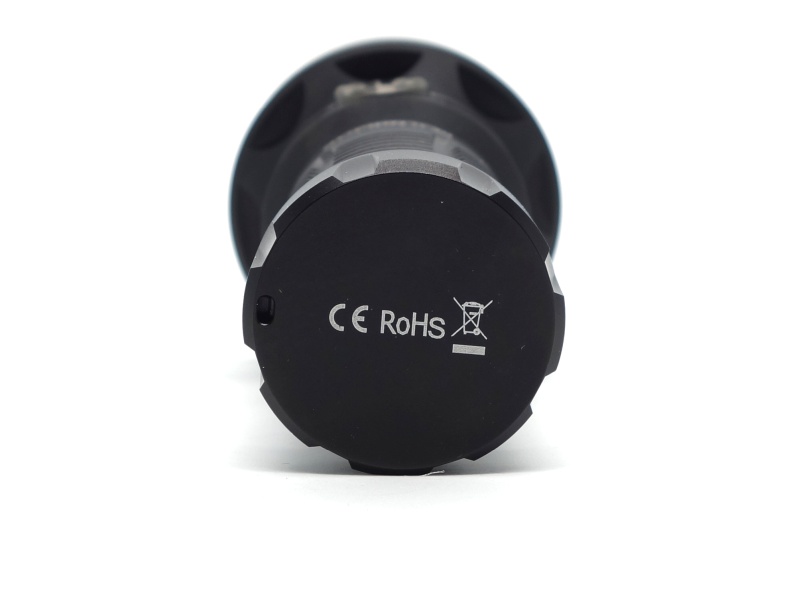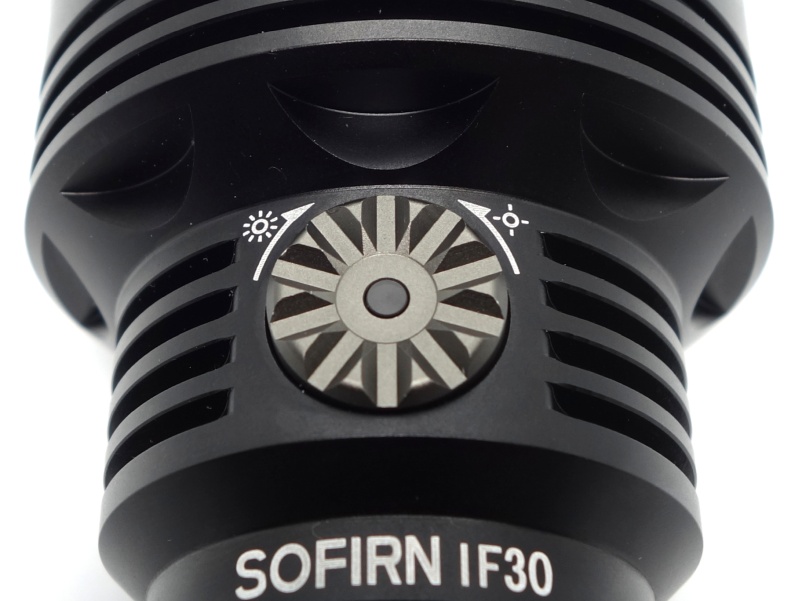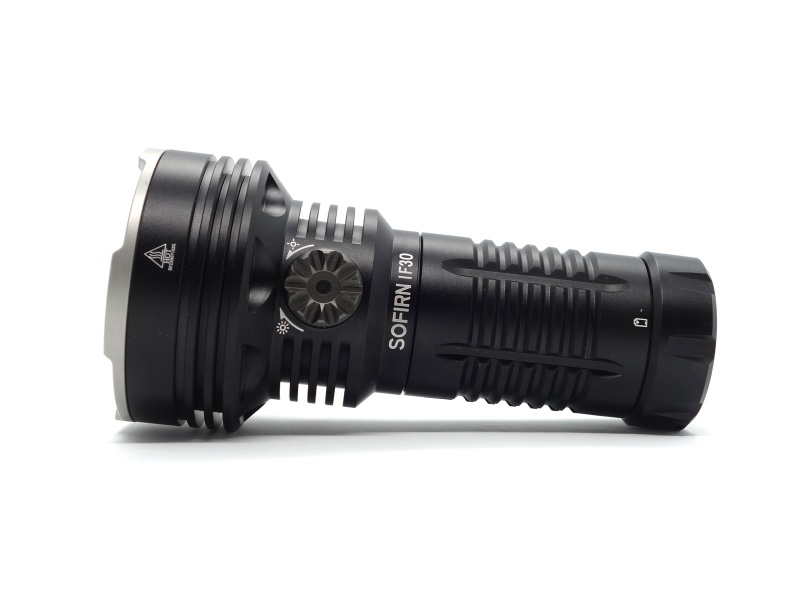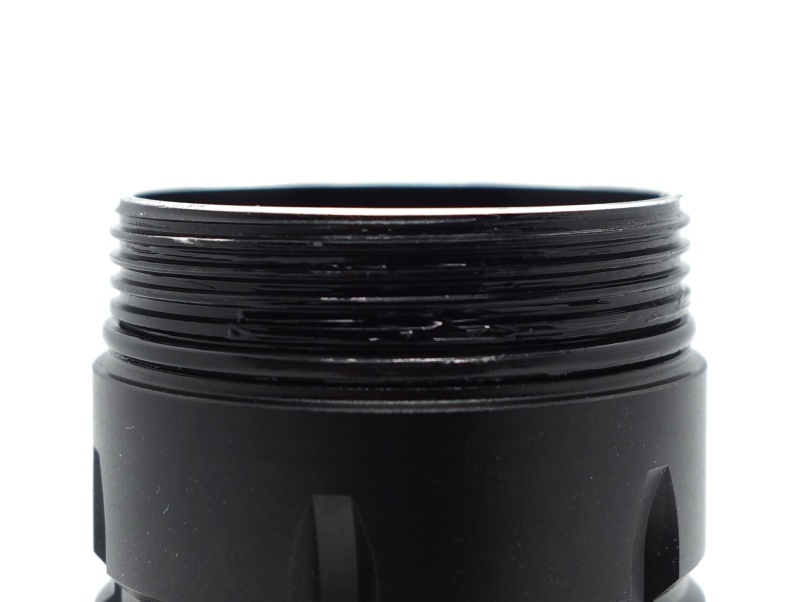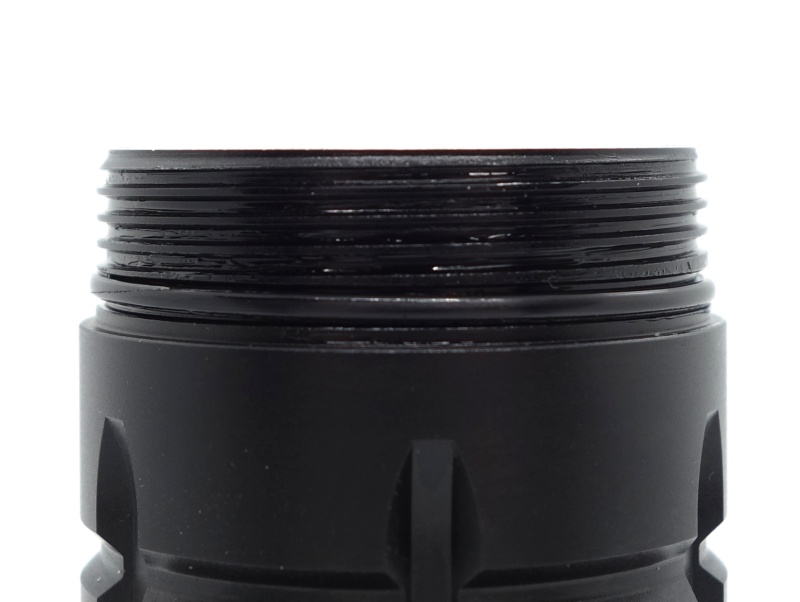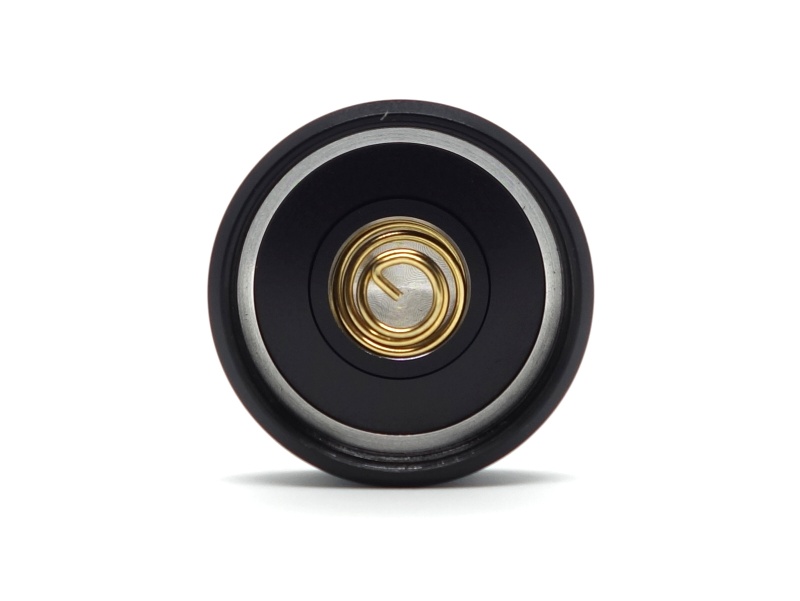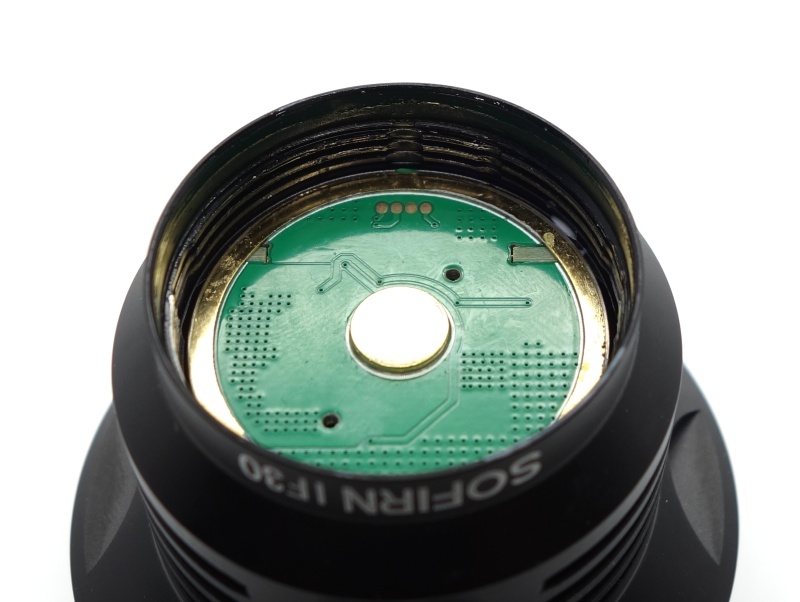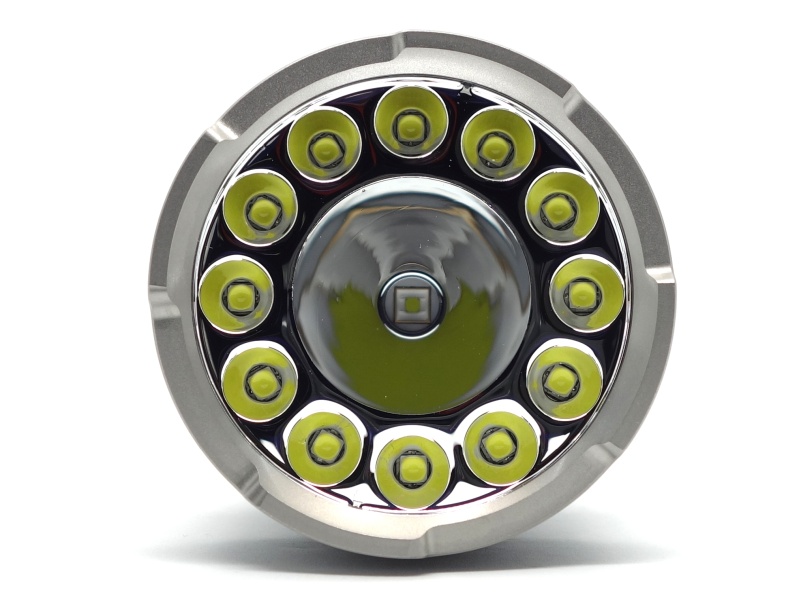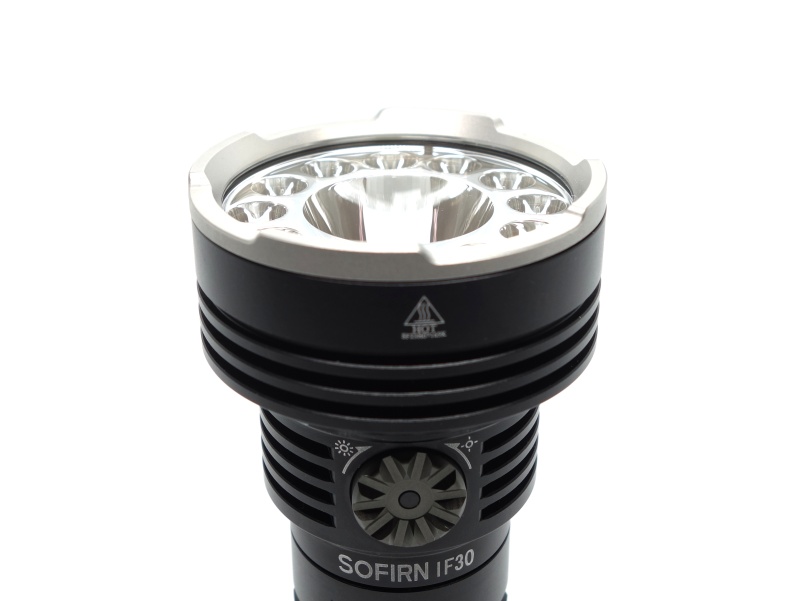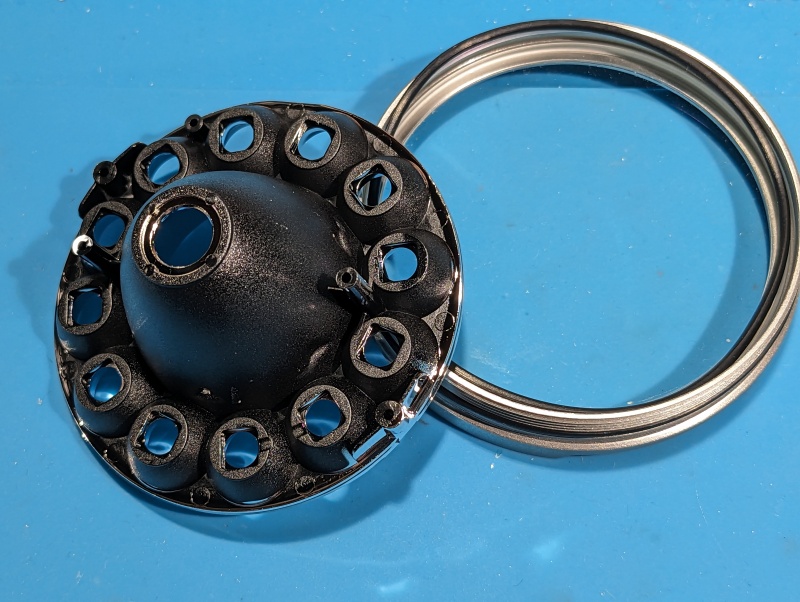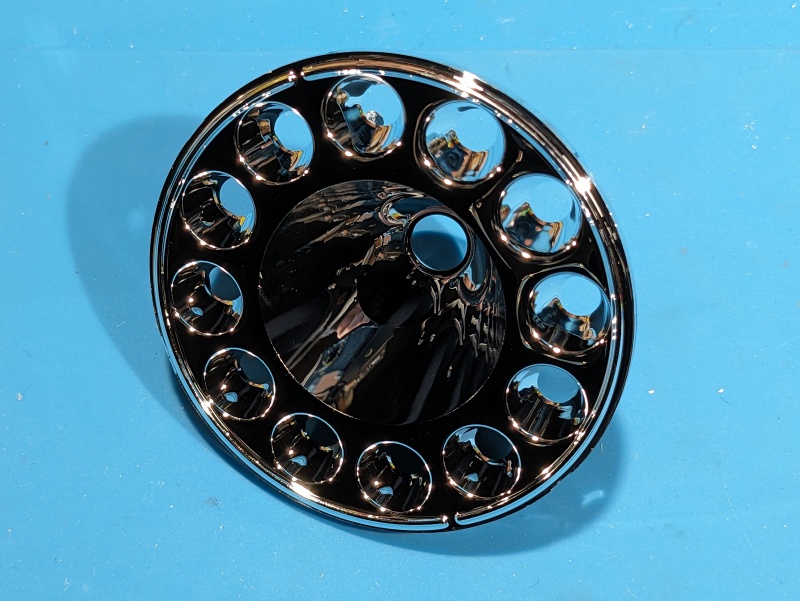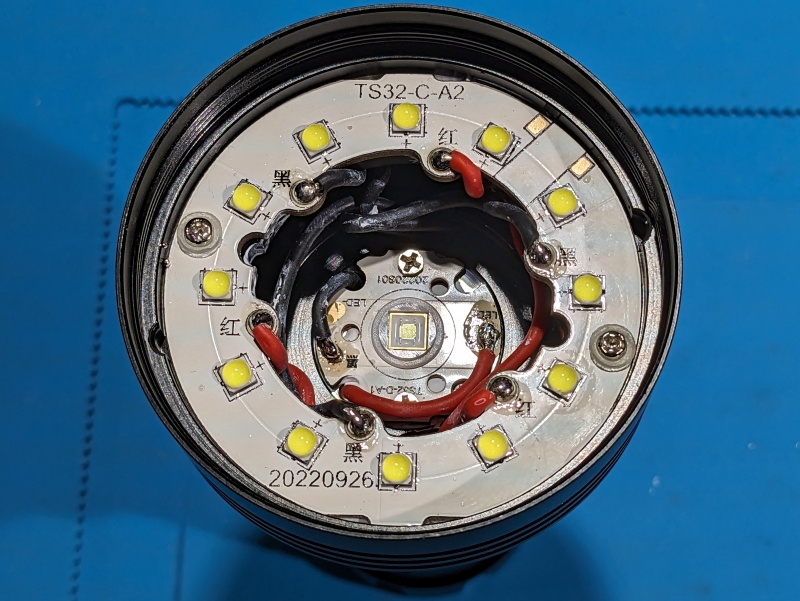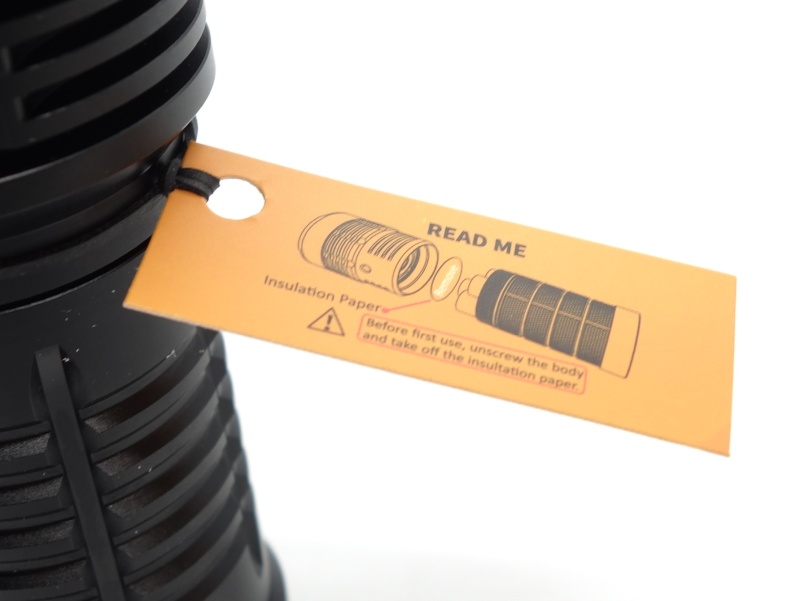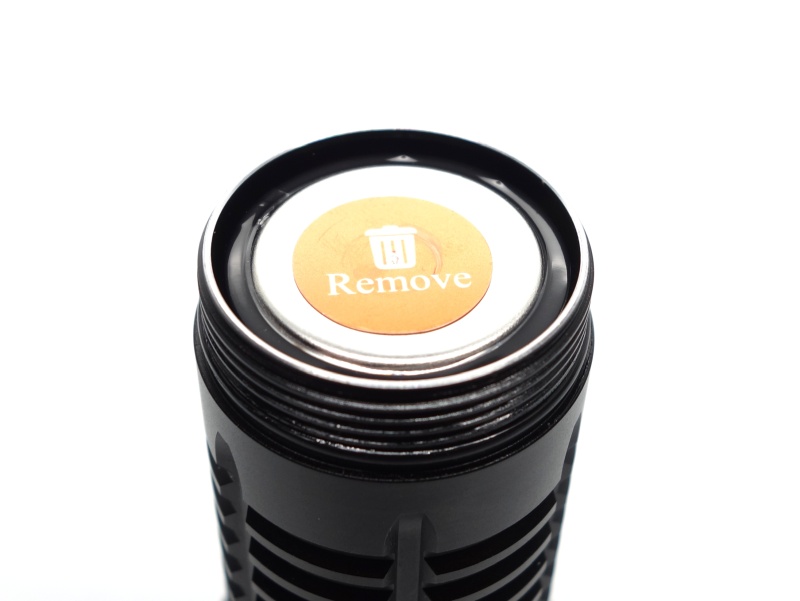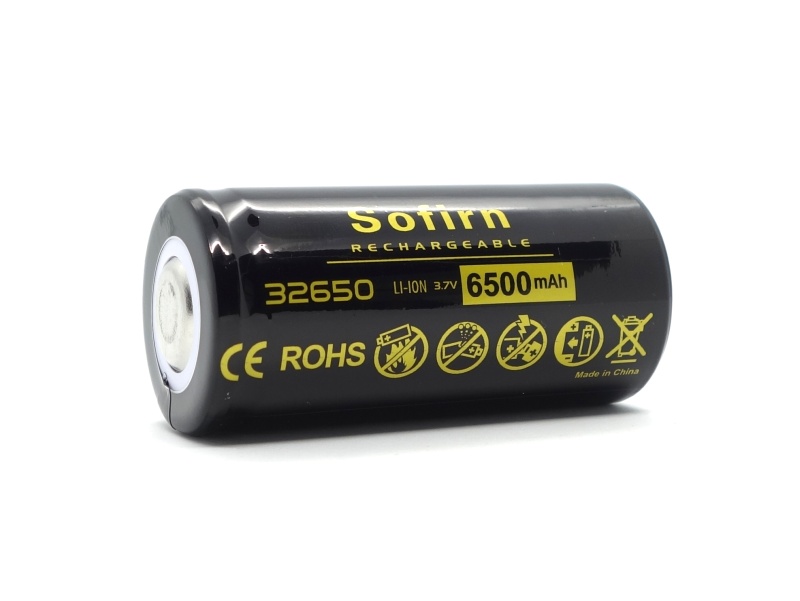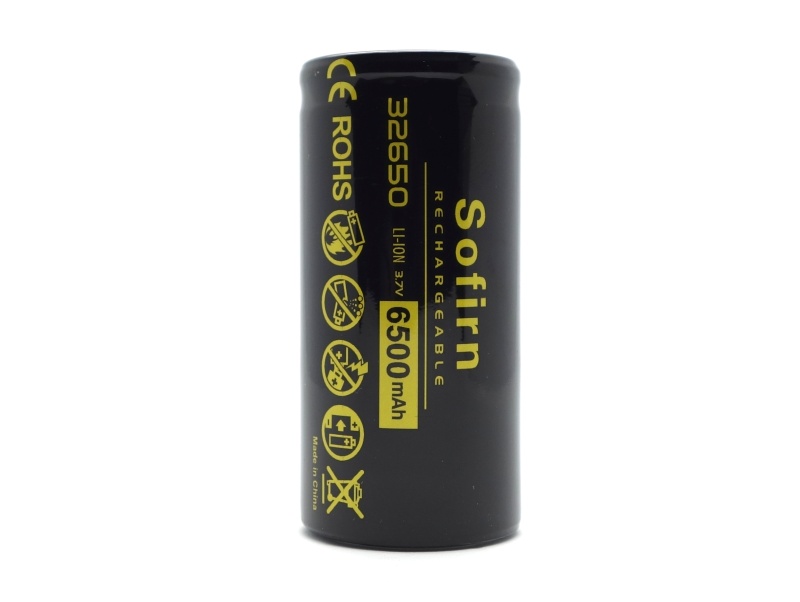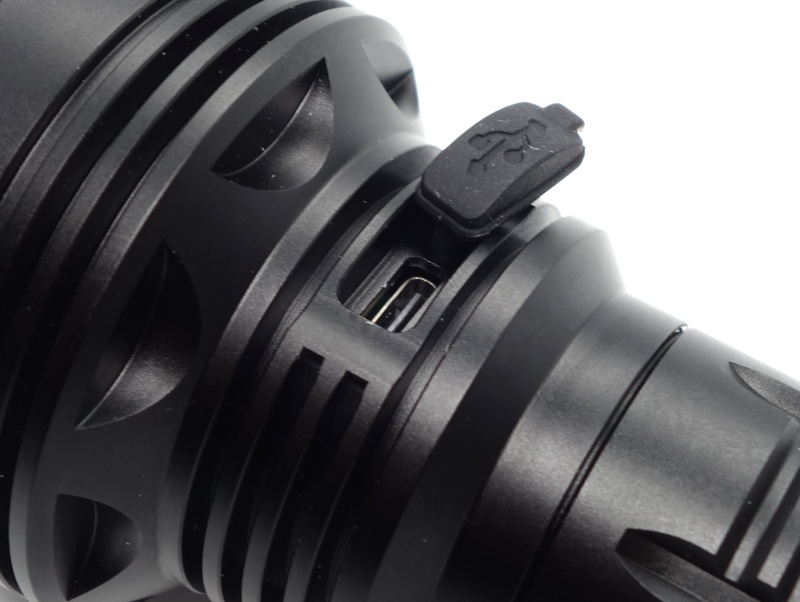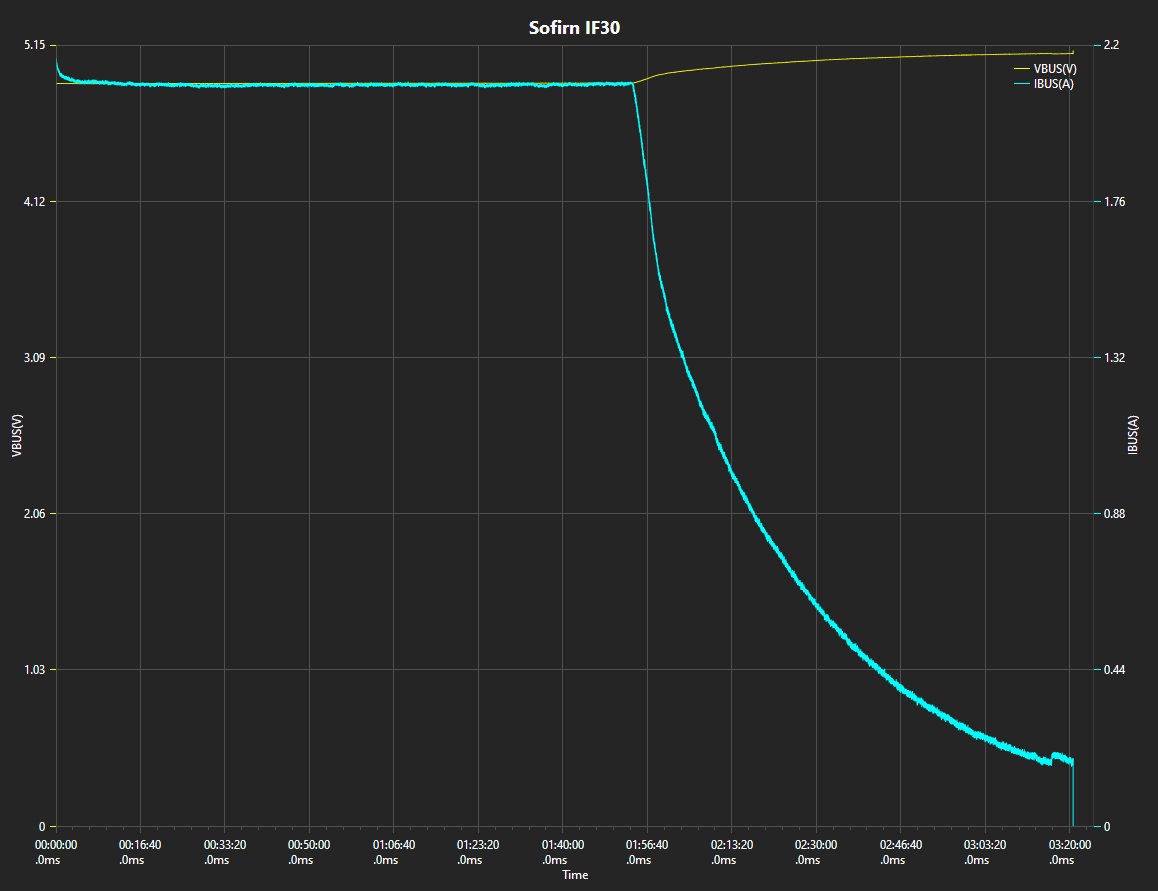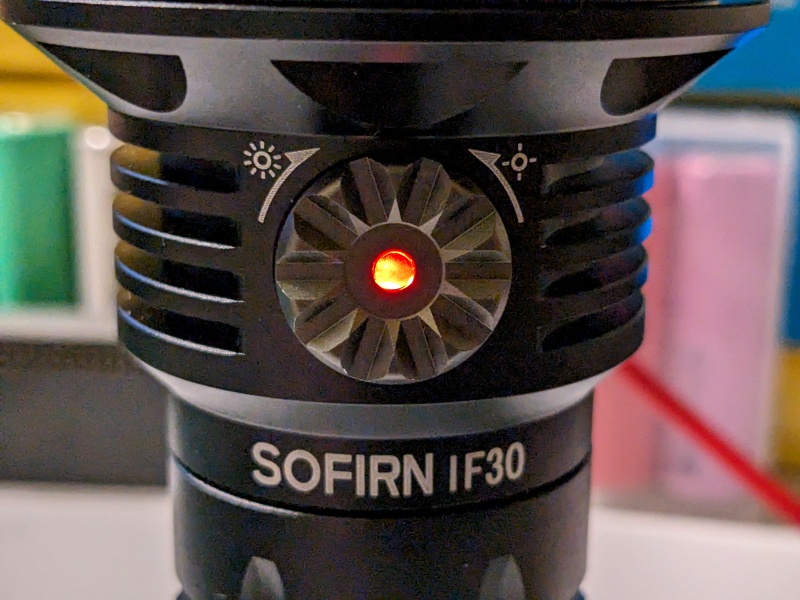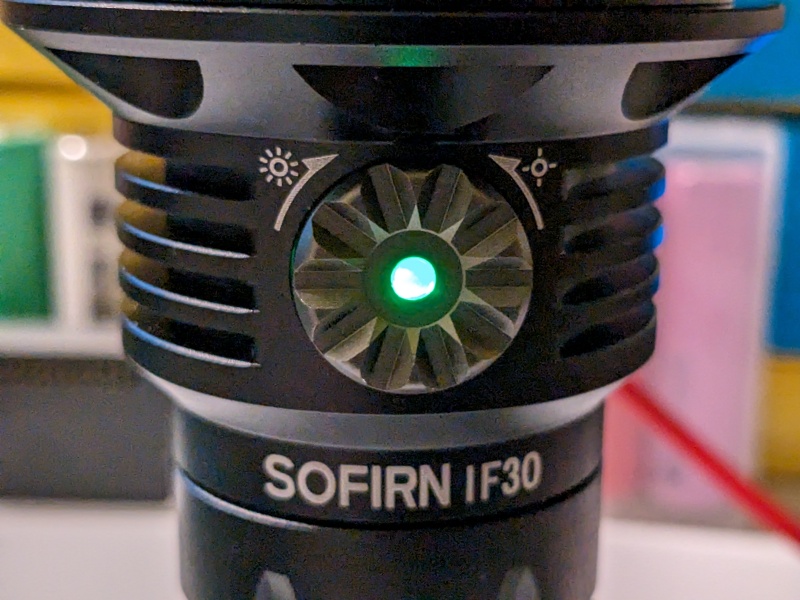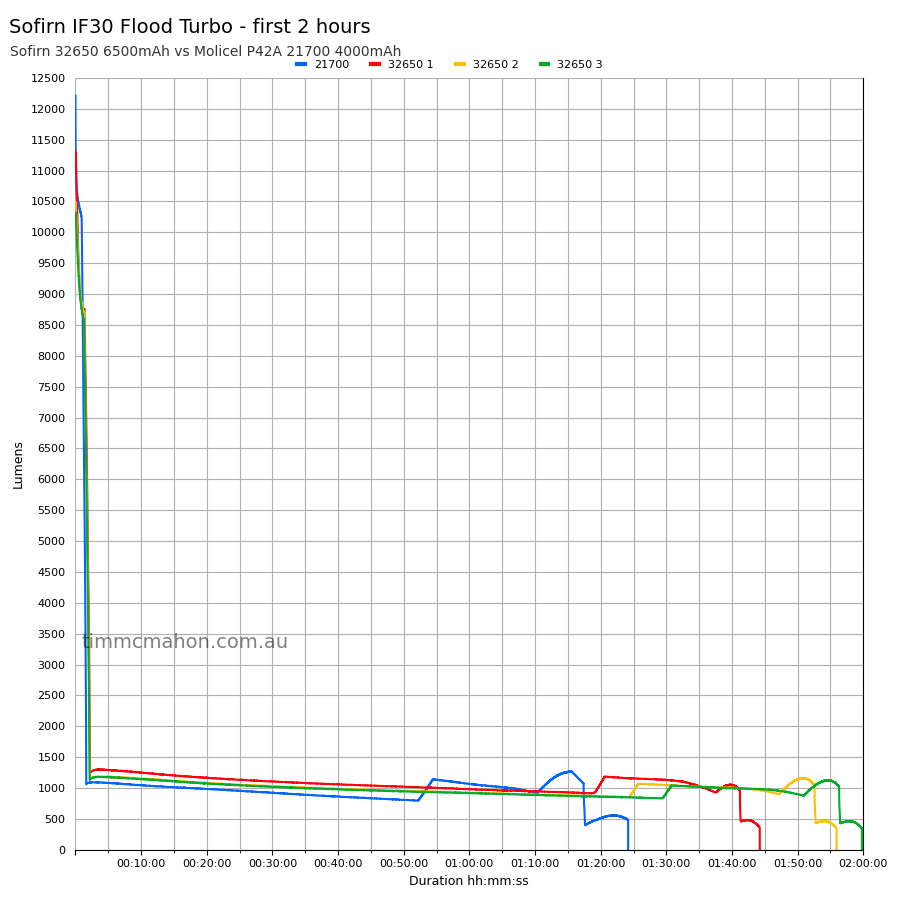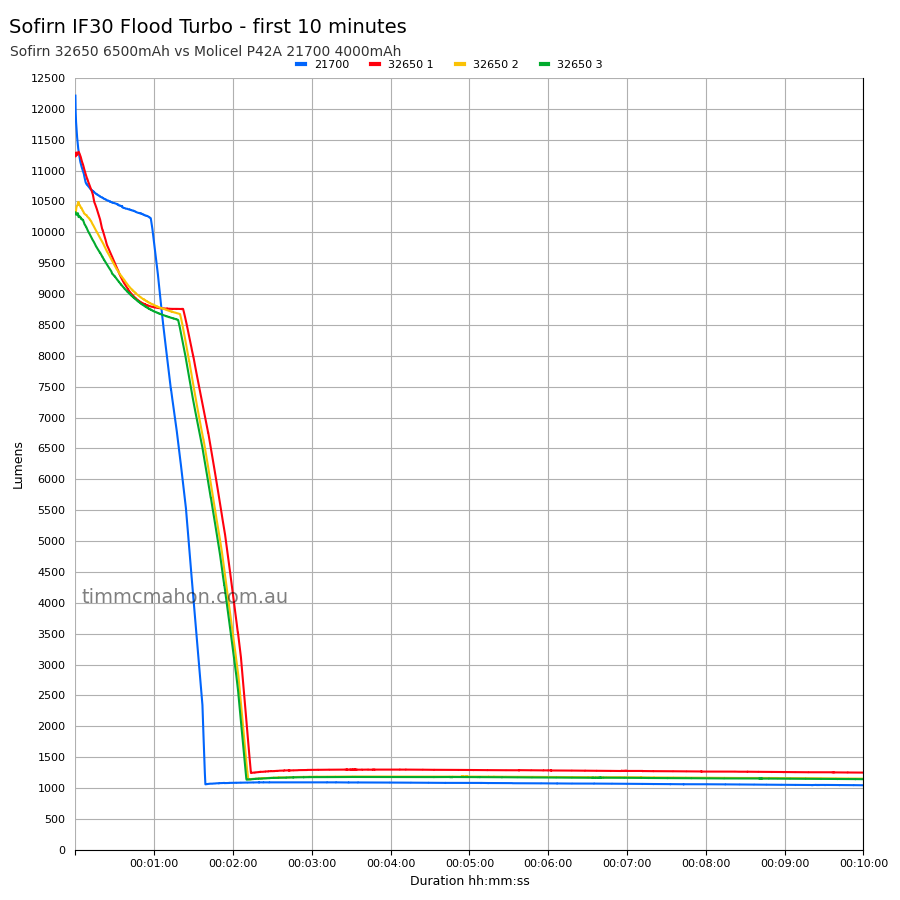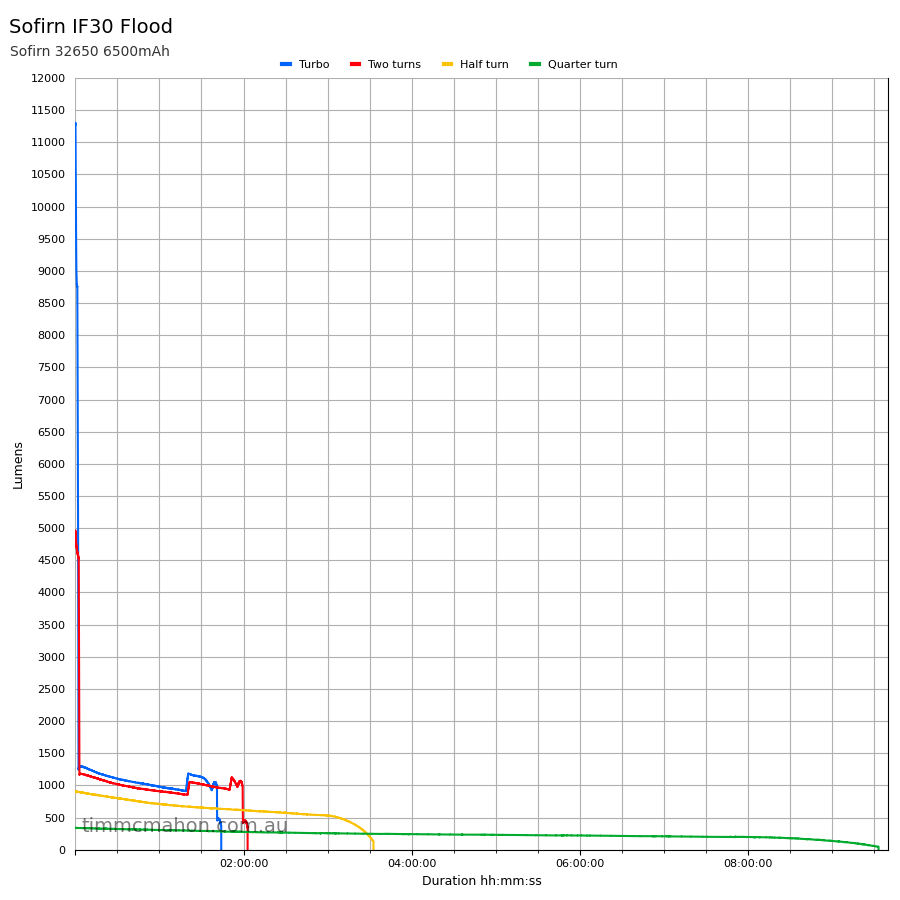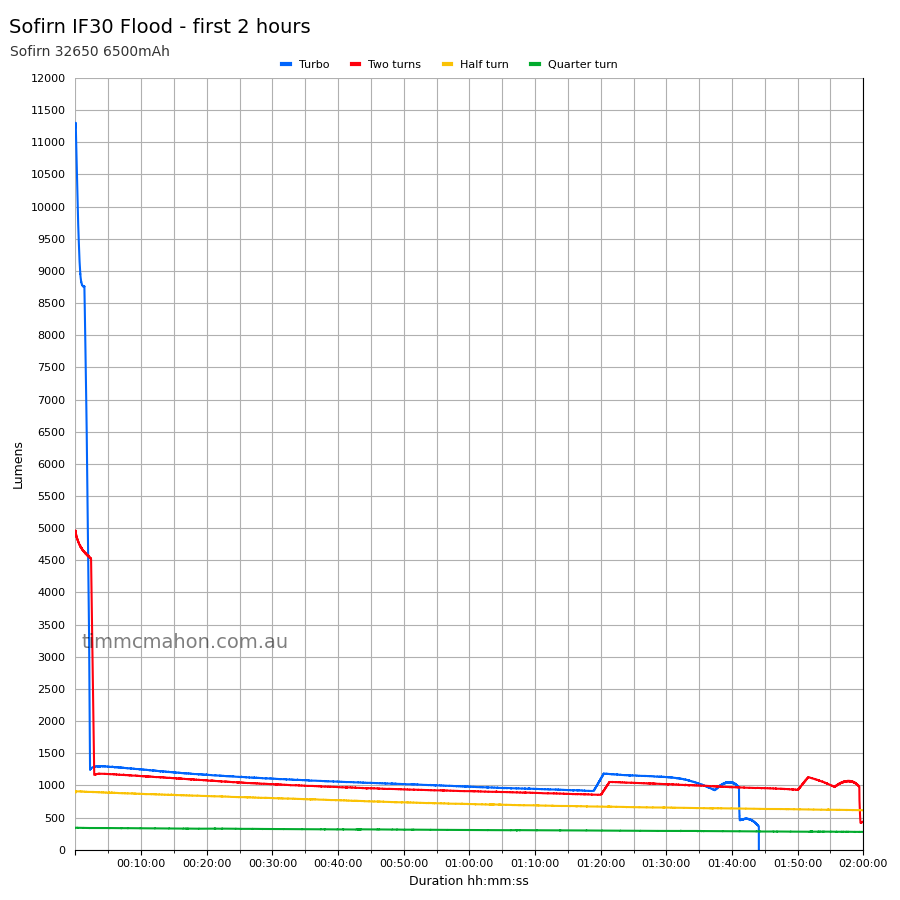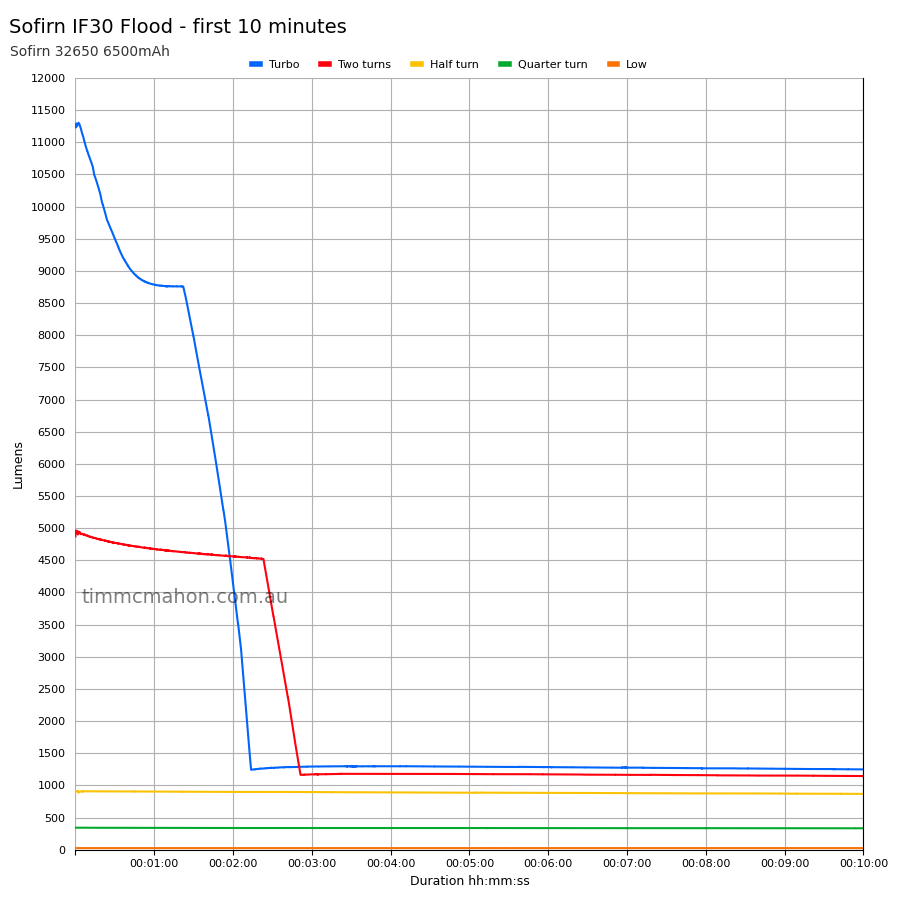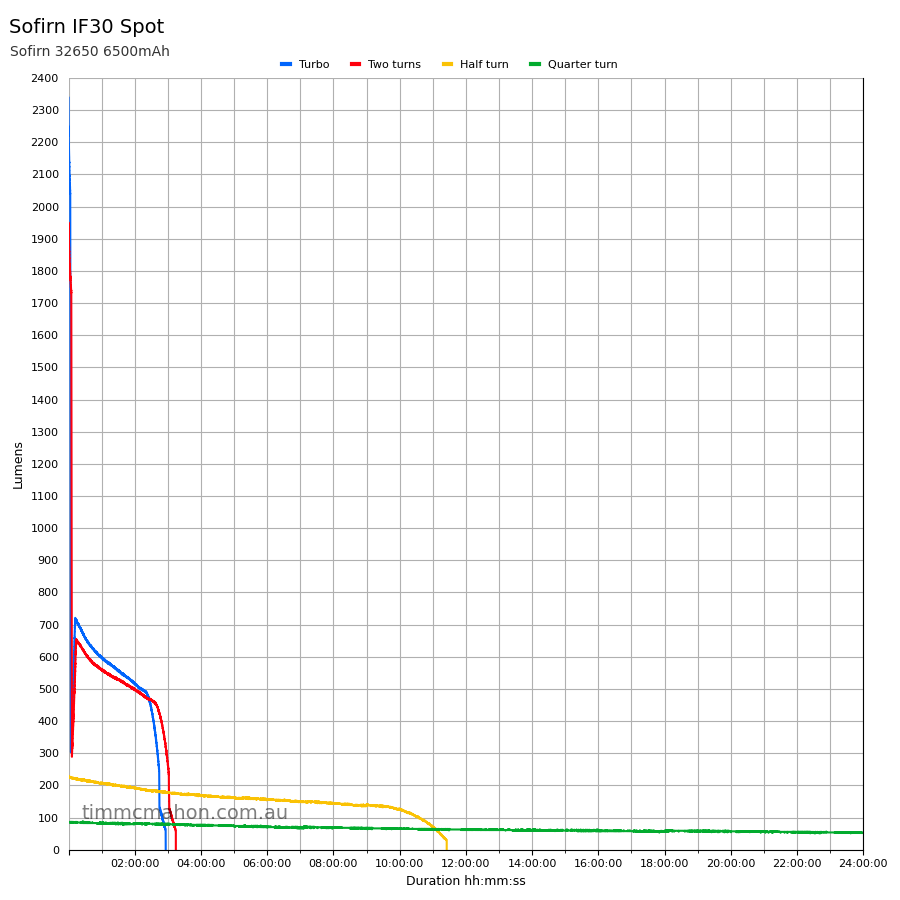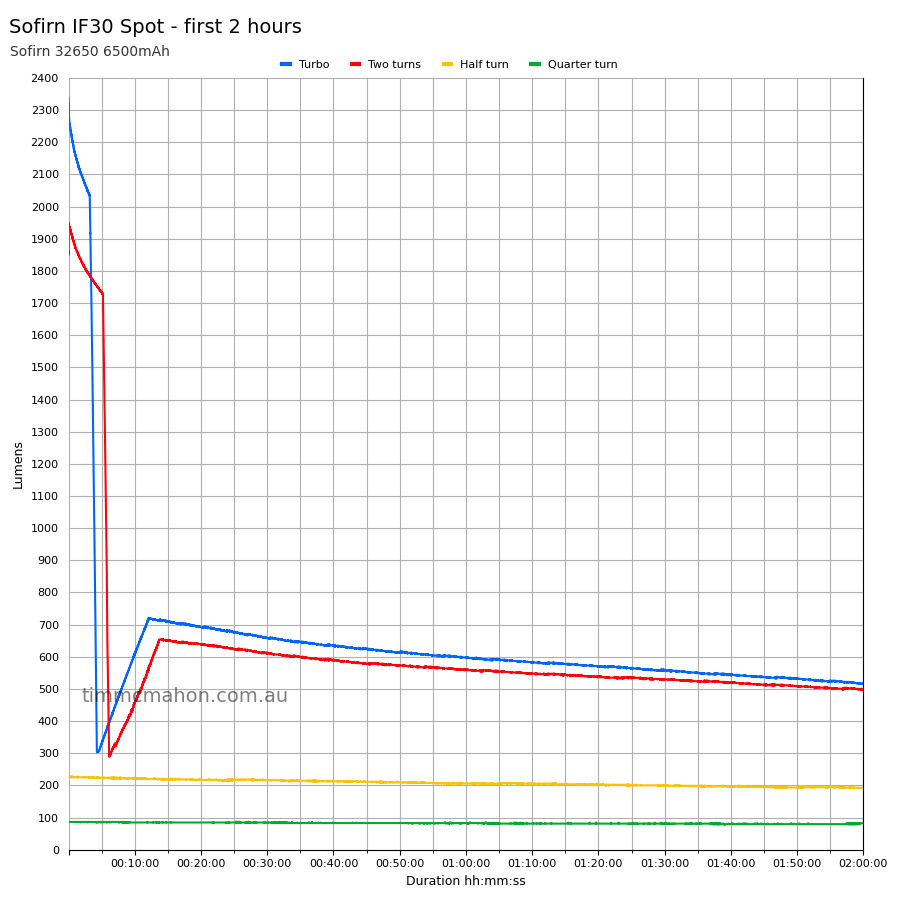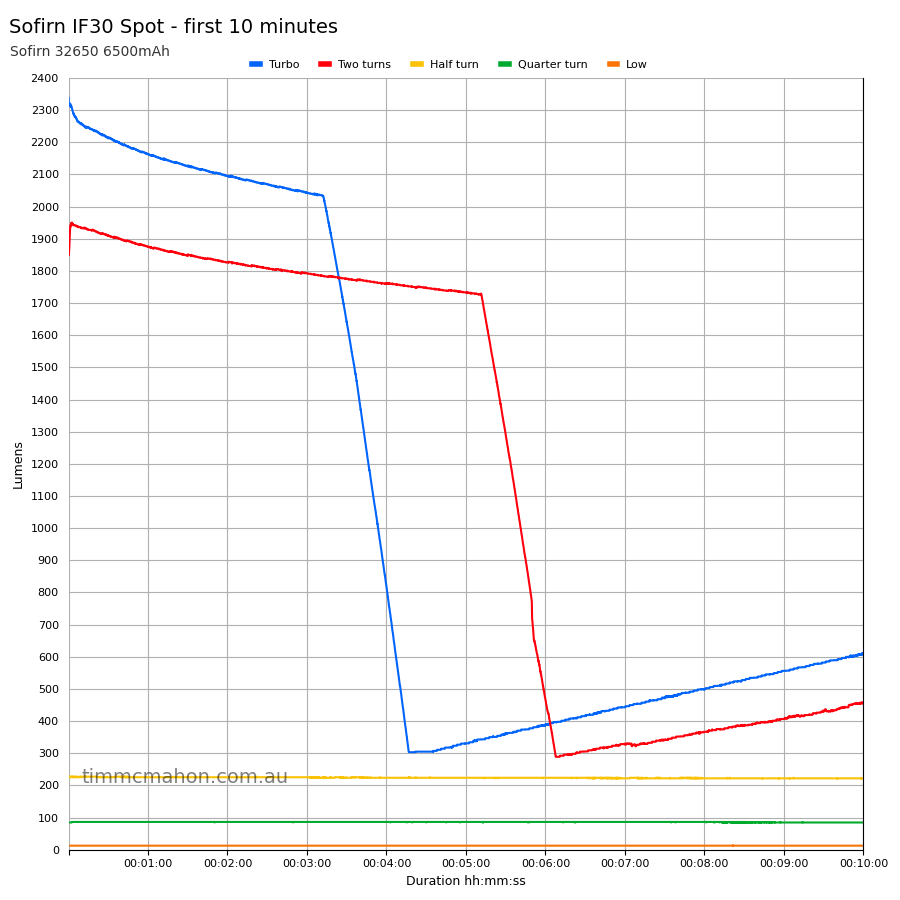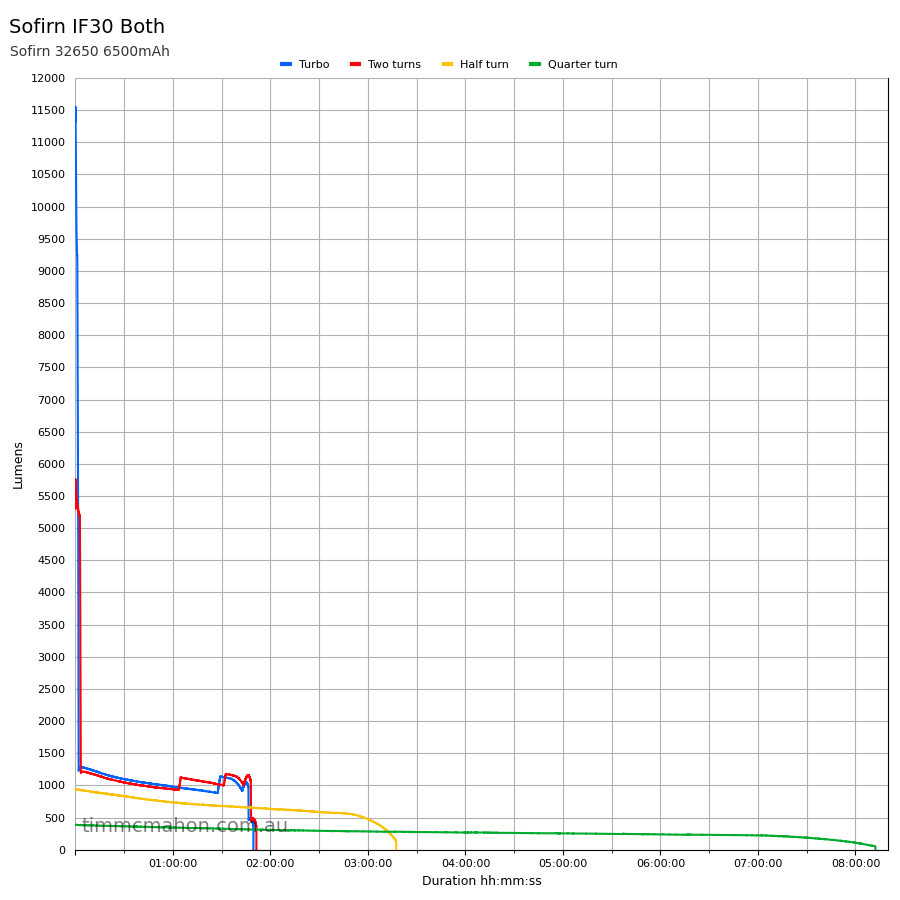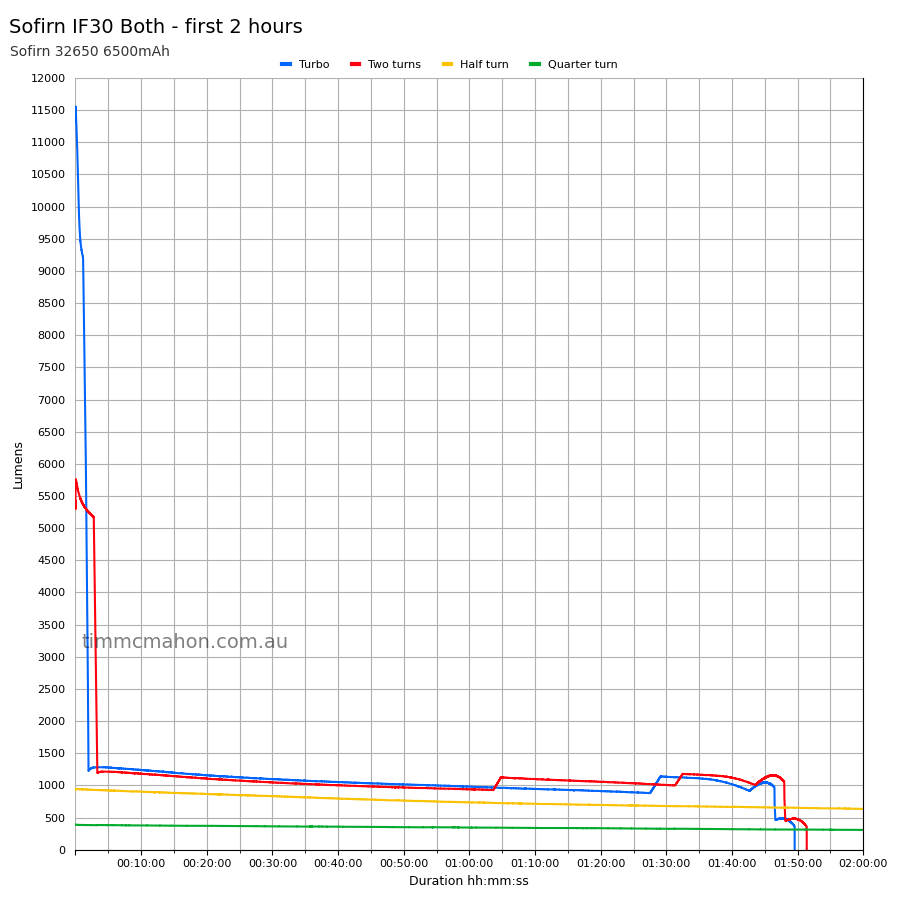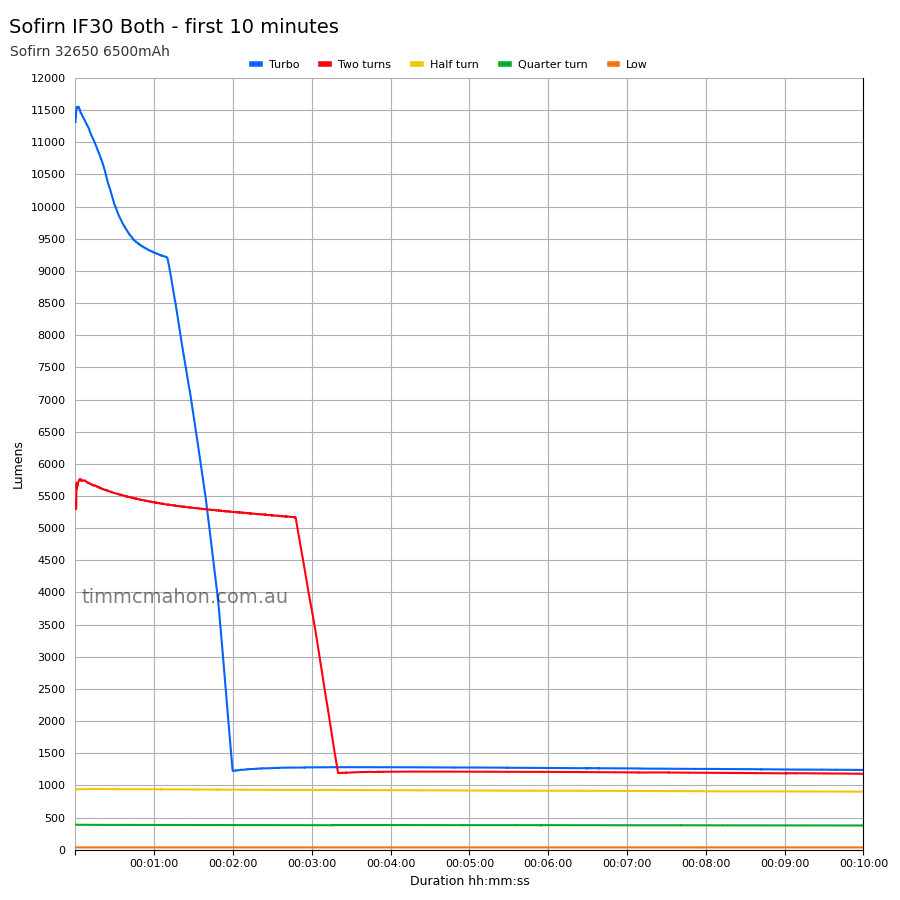Sofirn IF30 Torch Review
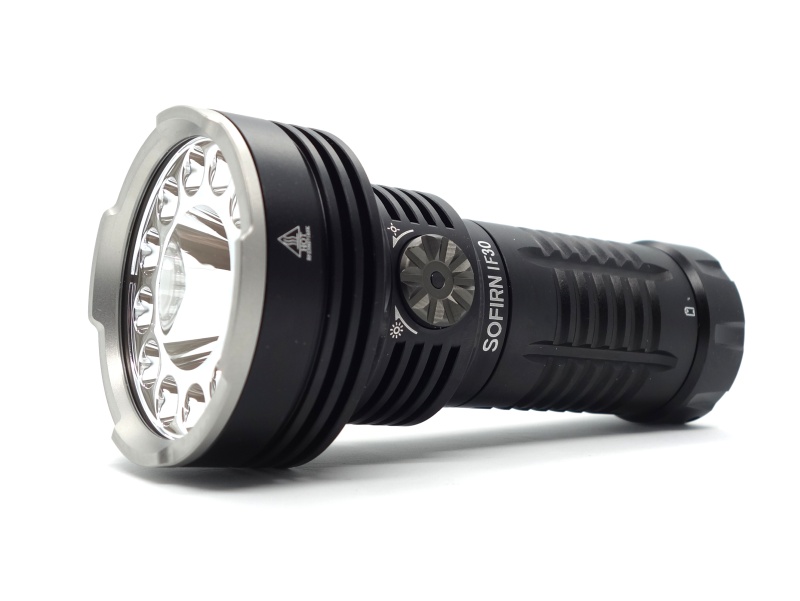
Sofirn IF30⌗
- Specifications
- Introduction
- Torch in use
- Build quality
- LED, bezel, lens, reflector and beam
- Size and comparison
- User interface
- Batteries and charging
- Performance
- Beamshots
- Conclusion
- Price
- Product page
Specifications⌗
| Brand/model | Sofirn IF30 |
|---|---|
| LED | 1*Luminus SFT40, 12*TN-3535 |
| Maximum lumens | 12,000 lm |
| Maximum beam intensity | 117,167 cd |
| Maximum throw | 685 m |
| Battery | 1* 32650 Li-ion |
| Onboard charging | Yes (USB-C) |
| Power bank | Yes (USB-C) |
| Material | Aluminium |
| Modes | 2 (Low, Turbo, Ramping) |
| Blinkies | Strobe |
| Reflector | Smooth |
| Waterproof | IPX-8 |
| Review date | October 2023 |
Introduction⌗
The Sofirn IF30 is a relatively compact torch that combines twelve floodlights and a spotlight into one package. The rotary switch can be rotated or pressed to control the brightness and change between floodlights, spotlight or both.
The 32650 battery helps keep the battery tube slim while providing 6500mAh of capacity.
A USB-C port allows the 32650 battery to be charged at a rate of 3A while also doubling as a power bank.
At first glance, the Sofirn IF30 looks like a slim version of the Wurkkos TS32 but it has a rotary switch instead of two buttons.
Here is my video review of the Sofirn IF30:
Sofirn kindly sent this torch for review. I have not been paid for this review nor have I held back my opinions of this torch.
Packaging⌗
The Sofirn IF30 comes in a large white box. An outer cardboard sheath has an image of the torch while a white box inside has a flap that can be lifted to reveal the torch.
The following was included in the box:
- Sofirn IF30
- Sofirn 32650 6500mAh cell
- Lanyard
- Two spare o-rings
- USB-A to USB-C cable
- User manual
Torch in use⌗
The Sofirn IF30 is a little bit smaller than a soda can sized torch. It is a good size for a jacket pocket. It feels comfortable in my hand.
A rotary switch can be used to control the brightness of the emitters by either rotating the switch or by pressing the switch.
There is a lot going on with twelve floodlight emitters and one spotlight emitter.
The ability to switch between floodlights, a spotlight or have both on makes the torch pretty versatile.
The torch automatically locks itself after fifteen seconds of being turned off. This feature provides a bit of peace of mind. I have burnt a few holes in my jacket pockets with various torches by mistake.
Build quality⌗
The Sofirn IF30 is made of aluminium and it has a matte black anodised finish.
The slots on the battery tube and the edges on the tailcap almost feel sharp.
A hole in the tailcap allows a lanyard to be attached. Unfortunately, the lanyard gets in the way when tailstanding. It would better if the lanyard hole is cut into the side of the tailcap so that the lanyard isn’t in the way.
The rotary switch turns smoothly after using it for a few weeks. It was a bit stiff initially.
The rotary switch gives a sastifying click when pressed. That said, it doesn’t give a satisfying clicking sound like a ratchet when rotated.
There is a red and green battery status indicator in the middle of the rotary switch.
The battery tube has an image of a battery to indicate the direction that the battery should be inserted. The image should be kept near the tailcap.
The battery tube can be reversed because the threads at the head and tail ends are the same. The threads came well lubricated and they are sufficiently anodised to allow the torch to be locked out by twisting the tail cap.
The spring in the tailcap gets too hot to touch after using Turbo! I managed to burn my finger while taking the 32650 battery out shortly after using Turbo (no damage, but it was hot!).
There are four pads on the spring side of the driver. Perhaps Anduril could be used one day?
LED, bezel, lens, reflector and beam⌗
The Sofirn IF30 comes with a Luminus SFT40 “spotlight” emitter and twelve cool white TN-3535 “floodlight” emitters.
A stainless steel bezel has been screwed down against a glass lens with an anti-reflective coating.
I was able to unscrew the bezel with my hand. It required a bit of force because there was an o-ring without lubricant.
There is a thin plastic ring sitting between the bezel and the glass lens. Under the lens is another o-ring that presses against the reflector.
The reflector is one piece and it is held in place with two feet and two cut-outs. I was able to pry the reflector out. There are no screws holding the reflector down (as is the case with a Sofirn SP36 BLF).
The Metal Core Printed Circuit Boards (MCPCBs) both have “TS32” on them. They are probably the same MCPCBs used in the Wurkkos TS32.
There appears to be a sufficient amount of thermal paste. The MCPCBs have been screwed down. That should help with transferring heat away from the emitters.
CCT, CRI, and duv⌗
I have taken Correlated Colour Temperature (CCT) and Colour Rendering Index (CRI, RA of R1-R8) measurements with the torch positioned one metre away from an Opple Light Master Pro III (G3) for Low and two metres away for Turbo.
The CCT of the floodlight is around 5500K and the CRI is around 67.
The CCT of the spotlight is around 6500K and the CRI is around 68.
The CCT of both the floodlight and spotlight is around 6100K and the CRI is around 67.
The Delta u, v is positive (green).
The spotlight produces a narrow beam with a wide spill. There are some ring artefacts around the hot spot when the beam is on a white wall but these are hard to see under normal circumstances when the light isn’t on a white wall.
The floodlights produce a very floody beam.
| LED | Mode | CCT (K) | CRI (Ra) | x | y | Duv |
|---|---|---|---|---|---|---|
| Flood | Low | 5359 | 65.8 | 0.3363 | 0.3650 | 0.0102 |
| Flood | Turbo | 5599 | 68.3 | 0.3301 | 0.3513 | 0.0062 |
| Spot | Low | 6053 | 66.1 | 0.3201 | 0.3439 | 0.0071 |
| Spot | Turbo | 6901 | 70.3 | 0.3072 | 0.3200 | 0.0014 |
| Both | Low | 6084 | 66.4 | 0.3195 | 0.3429 | 0.0069 |
| Both | Turbo | 6148 | 68.0 | 0.3185 | 0.3389 | 0.0054 |
Calculate Duv from CIE 1931 xy coordinates
Dimensions and size comparison⌗
Dimensions⌗
I took the following measurements using a digital caliper.
| Measurement | Unit (mm) |
|---|---|
| Length | 129.4 |
| Head diameter | 62.5 |
| Tube diameter | 38.0 |
| Tailcap diameter | 41.1 |
| Battery length | 69.3 |
| Battery diameter | 32.34 |
Weight⌗
I took the following measurements using a digital scale.
| Weight | Unit (g) |
|---|---|
| Sofirn IF30 | 259.18 |
| Battery | 151.31 |
| Sofirn IF30 with battery | 410.49 |
Size comparison with its competition⌗
From left to right: Sofirn SP36 BLF, Nightwatch Chaos NS59v2, Sofirn IF30, Lumintop Mach
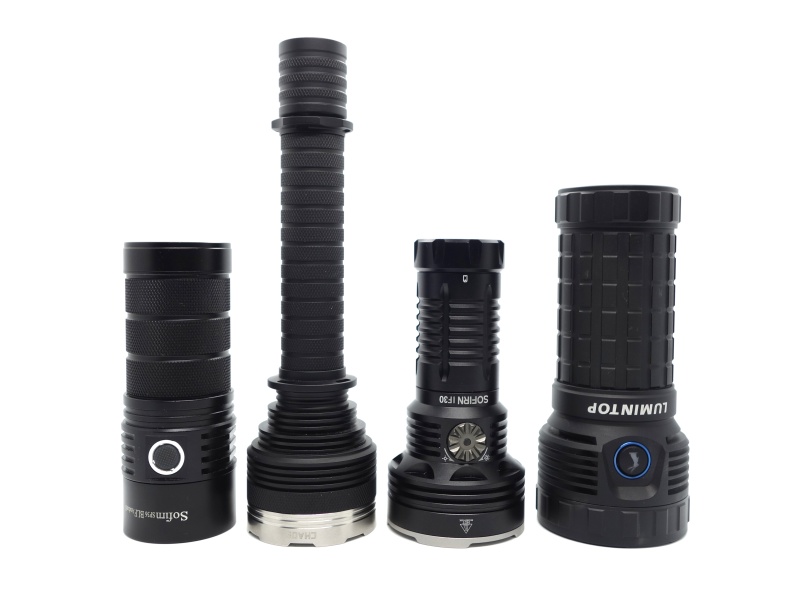
From left to right: Sofirn SP36 BLF, Nightwatch Chaos NS59v2, Sofirn IF30, Lumintop Mach
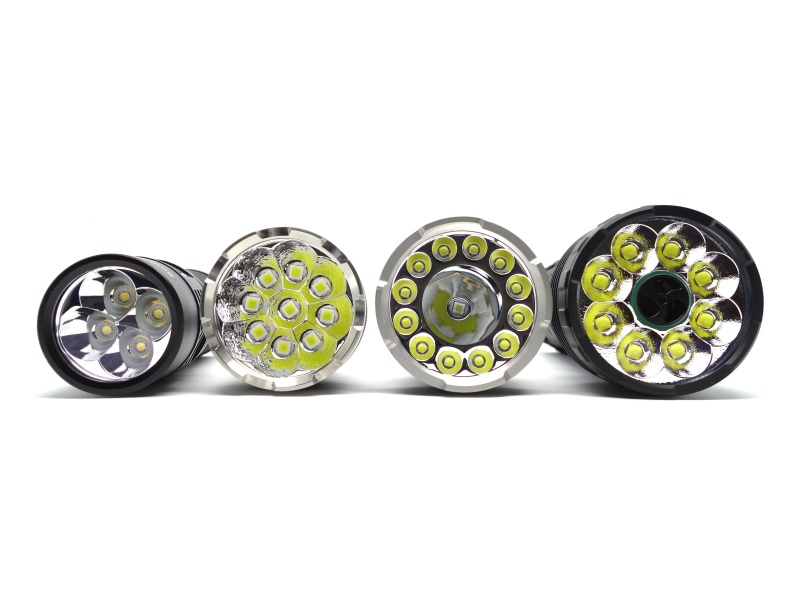
User interface⌗
The Sofirn IF30 has a rotary switch that can be rotated clockwise, rotated counter-clockwise or pressed.
There are two main modes: Low and Turbo.
The rotary switch can be turned clockwise to increase the output, and counter-clockwise to decrease the output, between Low and Turbo.
There are shortcuts to: Low, Turbo and Strobe.
Low can be accessed momentarily by holding the switch while the torch is locked out.
| State | Action | Result |
|---|---|---|
| Off | Hold | Low |
| Off | Click | On (mode memory) |
| Off | Two clicks | Turbo |
| Off | Three clicks | Strobe |
| On | Hold | Cycle (floodlight, spotlight, both) |
| On | Two clicks | Turbo |
| Turbo | Two clicks | Low |
| Low | Click | Last used level while ramping |
| On | Three clicks | Strobe |
| On | Rotate clockwise | Increase brightness |
| On | Rotate counter-clockwise | Decrease brightness |
| Locked | Click | Two blinks |
| Locked | Hold | Momentary Low |
| Locked | Rotate 60 degrees | Unlock (battery status indicator is displayed) |
Rotary switch⌗
I noticed that the rotary switch takes 2.75 to 3.5 clockwise rotations to go from Low to Turbo.
It takes about 3 to 4 counter-clockwise rotations to go from Turbo to Low.
The number of turns required might be affected by the speed in which the switch is turned and the voltage of the battery. I found that more rotations were needed to reach the upper limit when the voltage was lower.
Mode memory⌗
The torch memorises the last used level while ramping.
I ran into a scenario where the torch memorised the last used level while ramping but it did not memorise the last used level (i.e. Low).
For example:
Click on. Rotate the switch clockwise to ramp up to Turbo. Click off.
Hold to access Low from off. Click off.
What is the memorised mode? Low? No. Turbo was memorised.
Strobe⌗
Strobe has an alternating frequency.
Automatic lockout⌗
The torch automatically locks after it has been off for fifteen seconds.
To unlock the torch, simply rotate the rotary switch sixty degrees clockwise until the battery status indicator turns on.
Low can be accessed momentarily while the torch is locked by pressing and holding the rotary switch.
Battery status indication⌗
The indicator LED in the switch will display the following for 5 seconds when the torch is on:
| Colour | Battery level |
|---|---|
| Green | Capacity ≥ 50% |
| Red | 30% ≥ Capacity < 50% |
| Red flashing | Capacity < 25% |
The battery status indicator will continue to flash red while the torch is on and the battery power is less than 25%.
It looks as though there is a typing mistake in the user manual: What happens between 25% and 30%?
Low voltage protection⌗
There is low voltage protection. I tested low voltage protection by connecting the driver of the torch to a bench power supply and then by lowering the voltage from 4.2V.
| LED | Mode | LVP? | Cut-off voltage | Current |
|---|---|---|---|---|
| Flood | Low | Yes | 2.80V | 0.14 mA |
| Spot | Low | Yes | 2.80V | 0.14 mA |
| Both | Low | Yes | 2.82V | 0.14 mA |
The emitters turned off at 2.80V and the current dropped to 0.14 mA.
PWM⌗
I noticed a bit of flickering (visible PWM) on Low while using the floodlight.
What I like about the UI⌗
- Simple to use.
- Shortcut to Low from off.
- Shortcut to Turbo from off.
- Momentary Low while locked out.
What could be improved⌗
- The ramp speed could be more consistent when increasing and decreasing the brightness.
- I would like the automatic lock to be removed. I have to rotate the switch and press it every single time I want to use the torch. I prefer to lock a torch with four clicks or by unscrewing the tailcap.
Batteries and charging⌗
Battery⌗
A Sofirn 32650 6500mAh cell was included inside the torch. The cell arrived with a voltage of 4.01V, and it was isolated with a piece of plastic.
The cell has a maximum continuous discharge rate (CDR) of 6.5A but Turbo requires as much as 35A.
A cell with a higher CDR should be included instead, or Turbo should be reduced, so that the cell isn’t damaged with continued use of Turbo.
A flat top 21700 cell will work. I used a 21700 to 26650 adapter from another torch to help keep the cell centred in the battery tube.
Charging⌗
Power supply: PinePower Desktop USB-C
USB Meter: AVHzY CT-3 (recommended by LiquidRetro)
Room temperature: 20 C
I charged the included battery from 3.13V to 4.20V using the built-in charger. It took about 3 hours 20 minutes to fully charge.
The charging rate reached 5V 2.4A when I connected the torch to a PinePower Desktop USB-C port directly without using a AVHzY CT-3 USB Meter. The charging rate reached 5V 2A while connected to the USB Meter.
The charging status indicator flashes red while charging and turns green when charging is complete.
Power bank⌗
I was able to use the Sofirn IF30 to charge my phone with a charging rate of 5V 1.5A using a USB-C to USB-C cable.
Power supply compatibility⌗
I tried the following power supplies with the built-in USB-C charger:
| Power supply | USB Type | Protocol | Does it charge? |
|---|---|---|---|
| Apple 61W Power Adapter | USB-C | PD | Yes |
| Google Pixel Power Adapter | USB-C | PD | Yes |
| PinePower Desktop | USB-C | PD | Yes |
| PinePower Desktop | USB-A | QC | Yes |
| PinePower Desktop | USB-A | Yes |
USB-C to USB-C charging works.
Performance⌗
Specifications from the manual:
Floodlight:
| Mode | Low | Turbo | Strobe |
|---|---|---|---|
| Output (lumens) | 30 | 12,000 | 12,000 |
| Runtime | 130h | 1h 15min | |
| Beam Distance (metres) | 14 | 178 | |
| Beam Intensity (cd) | 46 | 19,350 |
There is a typing mistake in the user manual. The beam distance for the floodlight on Turbo should be 278 metres because square root (19,350 candelas / 0.25) is 278 metres.
Spotlight:
| Mode | Low | Turbo | Strobe |
|---|---|---|---|
| Output (lumens) | 10 | 2,500 | 2,500 |
| Runtime | 280h | 4h 45min | |
| Beam Distance (metres) | 49 | 685 | |
| Beam Intensity (cd) | 609 | 117,167 |
Both:
| Mode | Low | Turbo | Strobe |
|---|---|---|---|
| Output (lumens) | 40 | 12,000 | 12,000 |
| Runtime | 100h | 1h 15min | |
| Beam Distance (metres) | 170 | 592 | |
| Beam Intensity (cd) | 7,225 | 87,750 |
Sofirn mentioned runtime estimates for Low and Turbo but there wasn’t much else. I decided to measure the output after performing a quarter turn, a half turn, and two turns of the rotary switch.
Lumen measurements⌗
I used a UNI-T UT210E clamp meter to measure the current at turn on.
| LED | Mode | Amps at start | Specs | Lumens @turn on | Lumens @30 sec | Lumens @10 min |
|---|---|---|---|---|---|---|
| Flood | Low | 0.07 A | 30 | 25 | 25 | 25 |
| Flood | Quarter turn | 0.45 A | 341 | 339 | 333 | |
| Flood | Half turn | 1.67 A | 900 | 907 | 868 | |
| Flood | Two turns | 4,873 | 4,772 | 1,145 | ||
| Flood | Turbo 1 | 35.00 A | 12,000 | 11,274 | 9,500 | 1,249 |
| Flood | Turbo 2 | 35.00 A | 12,000 | 10,338 | 9,462 | 1,151 |
| Flood | Turbo 3 | 35.00 A | 12,000 | 10,323 | 9,283 | 1,142 |
| Flood | Turbo P42A | 35.00 A | 12,000 | 12,214 | 10,472 | 1,045 |
| Spot | Low | 0.05 A | 10 | 12 | 12 | 12 |
| Spot | Quarter turn | 0.29 A | 84 | 86 | 84 | |
| Spot | Half turn | 0.75 A | 227 | 225 | 222 | |
| Spot | Two turns | 1,860 | 1,909 | 455 | ||
| Spot | Turbo | 10.48 A | 2,500 | 2,338 | 2,213 | 608 |
| Both | Low | 0.10 A | 40 | 36 | 36 | 36 |
| Both | Quarter turn | 0.56 A | 391 | 386 | 377 | |
| Both | Half turn | 2.01 A | 929 | 942 | 902 | |
| Both | Two turns | 5,427 | 5,543 | 1,180 | ||
| Both | Turbo | 35.00 A | 12,000 | 11,314 | 10,017 | 1,240 |
Standby drain⌗
The user manual mentions a standby current of 230 µA.
I measured approximately 150 µA with a Sofirn 32650 6500mAh cell inserted. The current jumped around 100 to 180 µA and it occasionally reached 1 mA.
Measurements were taken using a UNI-T UT139C digital multimeter.
Runtime graphs⌗
I used my own DIY lumen tube with a TSL2591 sensor and forked bmengineer’s project RuTiTe to record runtimes.
Note: Lumen measurements may be off by 10% with my DIY lumen tube.
The room temperature was approximately 20 C.
Floodlight (Turbo comparison)⌗
I performed three Turbo (Floodlight) runtime tests using a Sofirn 32650 6500mAh cell and one runtime test using a Molicel P42A 21700 cell.
It looks like the included cell is being damaged each time I perform a runtime test for Turbo (Floodlight).
The included cell has a maximum continuous discharge rate (CDR) of 6.5A but the torch reaches 35A on Turbo!
The fourth Turbo (Floodlight) runtime test was done with a Molicel P42A 21700 cell and it had a higher light output compared to the 32650 cell.
I contacted Sofirn and recommended that they include a cell with a higher continuous discharge rate.
Floodlight⌗
Spotlight⌗
Both⌗
Runtime⌗
Here is a summary of the runtime results:
| LED | Mode | User manual | Runtime | Turn off | Final voltage |
|---|---|---|---|---|---|
| Flood | Turbo 1 | 1h 15min | 1h 8min 15s | 1h 44min 12s | 3.16 |
| Flood | Turbo 2 | 1h 15min | 52min 9s | 1h 55min 54s | 3.21 |
| Flood | Turbo 3 | 1h 15min | 55min 50s | 1h 59min 47s | 3.01 |
| Flood | Turbo P42A | 1h 15min | 9min 50s | 1h 24min 7s | 2.99 |
| Flood | Two turns | 2h 2min 55s | 2h 2min 55s | ||
| Flood | Half turn | 3h 32min 43s | 3h 32min 43s | 3.10 | |
| Flood | Quarter turn | 9h 33min 14s | 9h 33min 14s | 3.02 | |
| Flood | Low | 130h | 10min+ | 10min+ | |
| Spot | Turbo | 4h 45min | 2h 44min 6s | 2h 55min 49s | 3.10 |
| Spot | Two turns | 3h 1min 35s | 3h 13min 56s | 2.93 | |
| Spot | Half turn | 11h 23min 51s | 11h 23min 51s | 3.03 | |
| Spot | Quarter turn | 24h+ | 24h+ | ||
| Spot | Low | 280h | 10min+ | 10min+ | |
| Both | Turbo | 1h 15min | 54min 41s | 1h 49min 43s | 3.13 |
| Both | Two turns | 1h 48min 29s | 1h 51min 47s | 3.16 | |
| Both | Half turn | 3h 17min 33s | 3h 17min 33s | 2.98 | |
| Both | Quarter turn | 8h 12min 17s | 8h 12min 17s | 3.06 | |
| Both | Low | 100h | 10min+ | 10min+ |
“Runtime” is the time until the output reduces to 10% of the output at 30 seconds (as per the ANSI/PLATO FL1 2019 Standard).
“Turn off” is the time until my DIY lumen tube no longer detects more than 1 lumen.
“+” indicates that the light remained on after recording had stopped.
The IF30 produced about 1,000 lumens for a little over 1 hour 45 minutes with both the floodlights and spotlight on Turbo.
Turbo with both the floodlights and spotlight turned on dropped below 1,001 lumens at 54min 41s. 1,001 lumens is 10% of 10,017 lumens measured at 30 seconds. 1h 15min is the expected runtime but it fell short if you assume that my lumen tube is accurate within +/- 1 lumen (it is not). It is a bit harsh to say that the runtime is 54min 41s when the accuracy of my lumen tube could be out by +/- 10%.
It is interesting how the output consistently increases toward the end of a Turbo runtime for the floodlight.
Regulation for the spotlight could be improved. The output isn’t zig-zagging up and down but it would be nice to have regulated output for the Luminus SFT40 emitter.
Throw⌗
I took lux measurements with a UNI-T UT383BT at 30 seconds. Low was measured at one metre. Turbo was measured at five metres.
| LED | Mode | Specs (cd) | Specs (m) | Candela measured (cd) | Distance (m) |
|---|---|---|---|---|---|
| Flood | Low | 46 | 14 | 43 | 13 |
| Flood | Turbo | 19,350 | 278 | 18,050 | 268 |
| Spot | Low | 609 | 49 | 693 | 52 |
| Spot | Turbo | 117,167 | 685 | 126,275 | 710 |
| Both | Low | 7,225 | 170 | 721 | 53 |
| Both | Turbo | 87,750 | 592 | 80,800 | 568 |
The beam distance for Low with both the floodlights and spotlight on was lower than expected. 52 metres instead of 170 metres. Perhaps it is another typing mistake (7225 should be 725 cd?).
Beamshots⌗
I went to a local park and aimed the Sofirn IF30 at a tree 70 metres away while using Turbo.
Beamshots were taken using a Sony RX100M2 using 3.2", f3.2, ISO 100, 5000K WB.
Sofirn IF30 Spot (Turbo)⌗
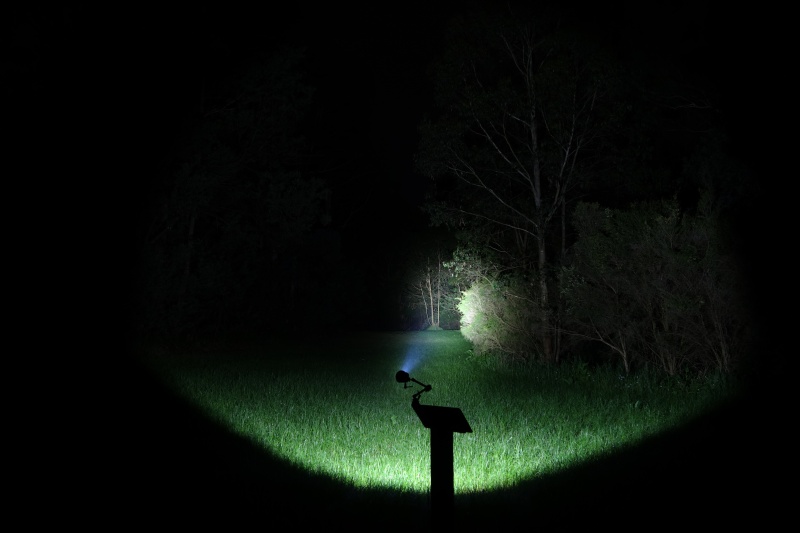
Sofirn IF30 Flood (Turbo)⌗
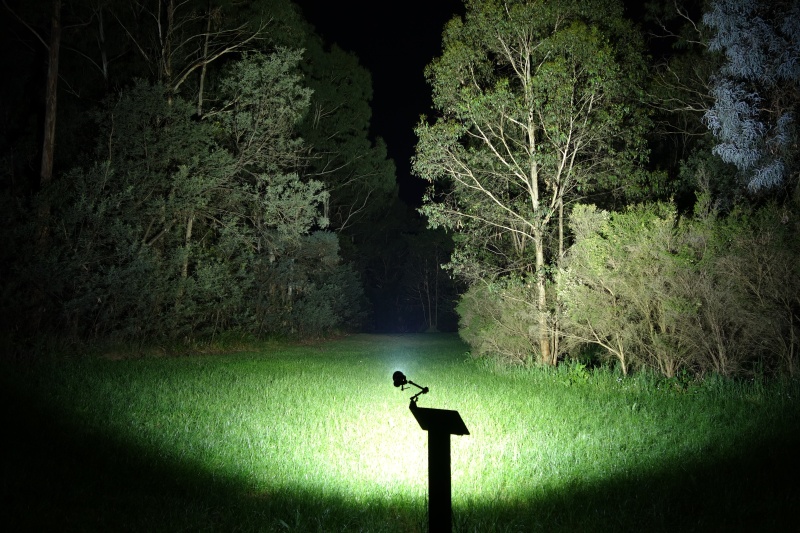
Sofirn IF30 Both (Turbo)⌗
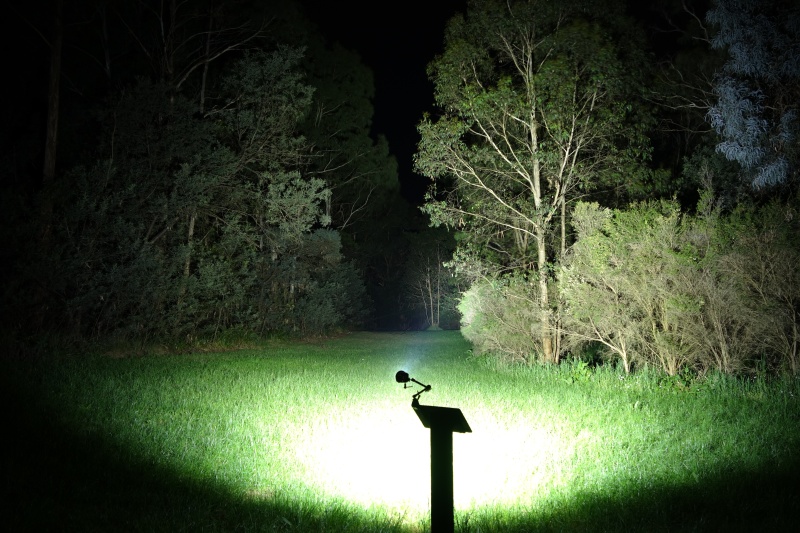
Lumintop Mach (Turbo)⌗
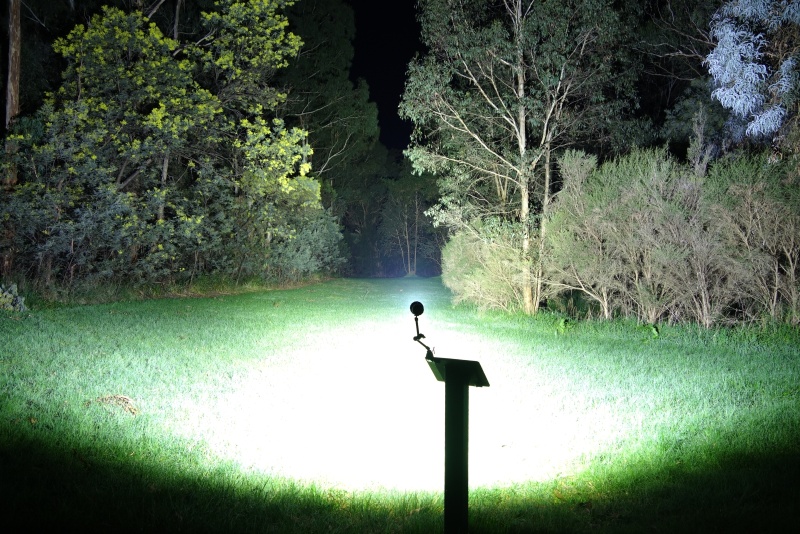
Nightwatch Chaos NS59v2 9xSFQ60.3⌗
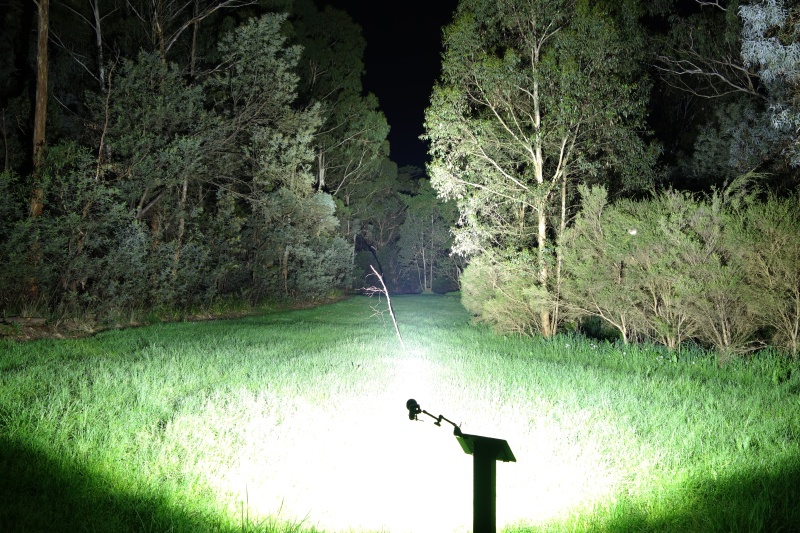
Conclusion⌗
The Sofirn IF30 is a lot of fun!
I have developed a bit of muscle memory with the rotary switch where I rotate it once and mash the button to unlock the torch and turn it on.
I like how compact it feels in my hand compared to a soda can torch.
The emitters appear to have been chosen to maximum the beam distance and lumens. It would be nice if some high CRI Nichia 519A emitters with a nice tint are used instead of these cool white TN-3535 emitters. The low CRI 6500K Luminus SFT40 emitter could be swapped out for a high CRI 3000K Luminus SFT40. The beam distance and lumen output might decrease with these other emitters but I think that the beam would look nicer.
The runtimes are ok.
The torch falls short of the 12,000 lumen claim by a few thousand lumens if measuring the output at 30 seconds (ANSI/NEMA FL1). It may reach 12,000 lumens at turn on with a cell capable of a high continuous discharge rate.
1,000 lumens for 1 hour 45 minutes with all the emitters on Turbo is pretty good but it is to be expected with a torch this size.
Regulation for the spotlight emitter could be improved so that the light output is stable instead of gradually dropping.
The power bank feature makes more sense in with thicker soda can sized torch where there may be three or four 21700 cells to provide more capacity. It is a nice feature to have though.
It is a pretty good package overall but the included 32650 needs to be improved. The 32650 cell has a maximum continuous discharge rate of 6.5A but Turbo reaches 35A. The cell appears to be degrading each time I perform a Turbo runtime test.
Pros:⌗
- Good build quality.
- Simple user interface.
- Good mix of flood and throw options.
- Low voltage protection.
- Built-in USB-C charging.
- Power bank.
Cons:⌗
- The included 32650 cell struggles with Turbo.
- The tailcap almost feels sharp in my palm.
- Automatic lock.
- Regulation.
- Low CRI.
Price⌗
The Sofirn IF30 is US$81.99 at the time of writing.
